WFC 110L Quiz 1 - Bones, hair, teeth
1/76
Earn XP
Description and Tags
includes everything except skull, which is here https://knowt.com/flashcards/c8ddbff7-4097-40fc-a00a-e2c8c28113f4
Name | Mastery | Learn | Test | Matching | Spaced |
|---|
No study sessions yet.
77 Terms
ulna
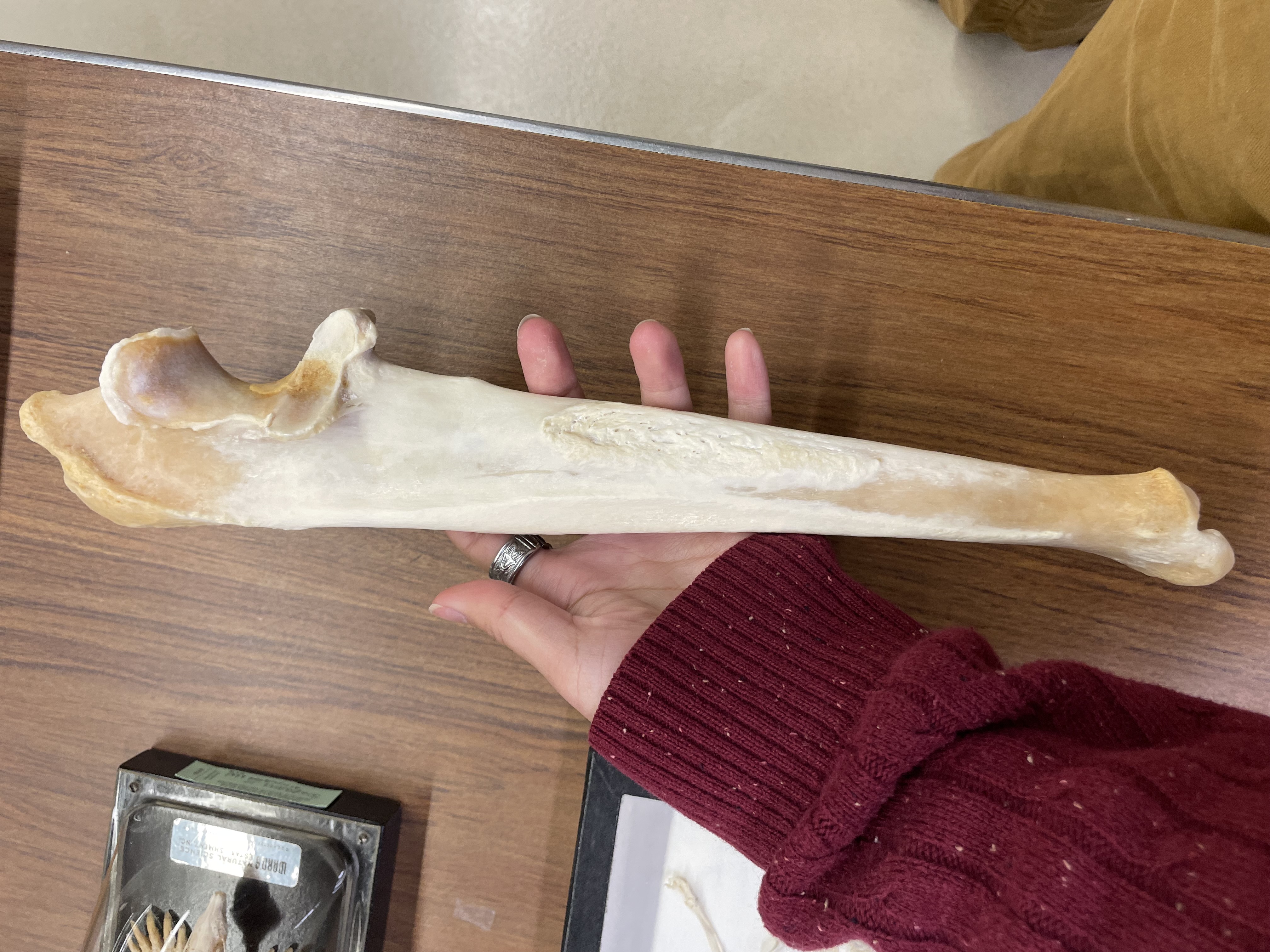
fibula
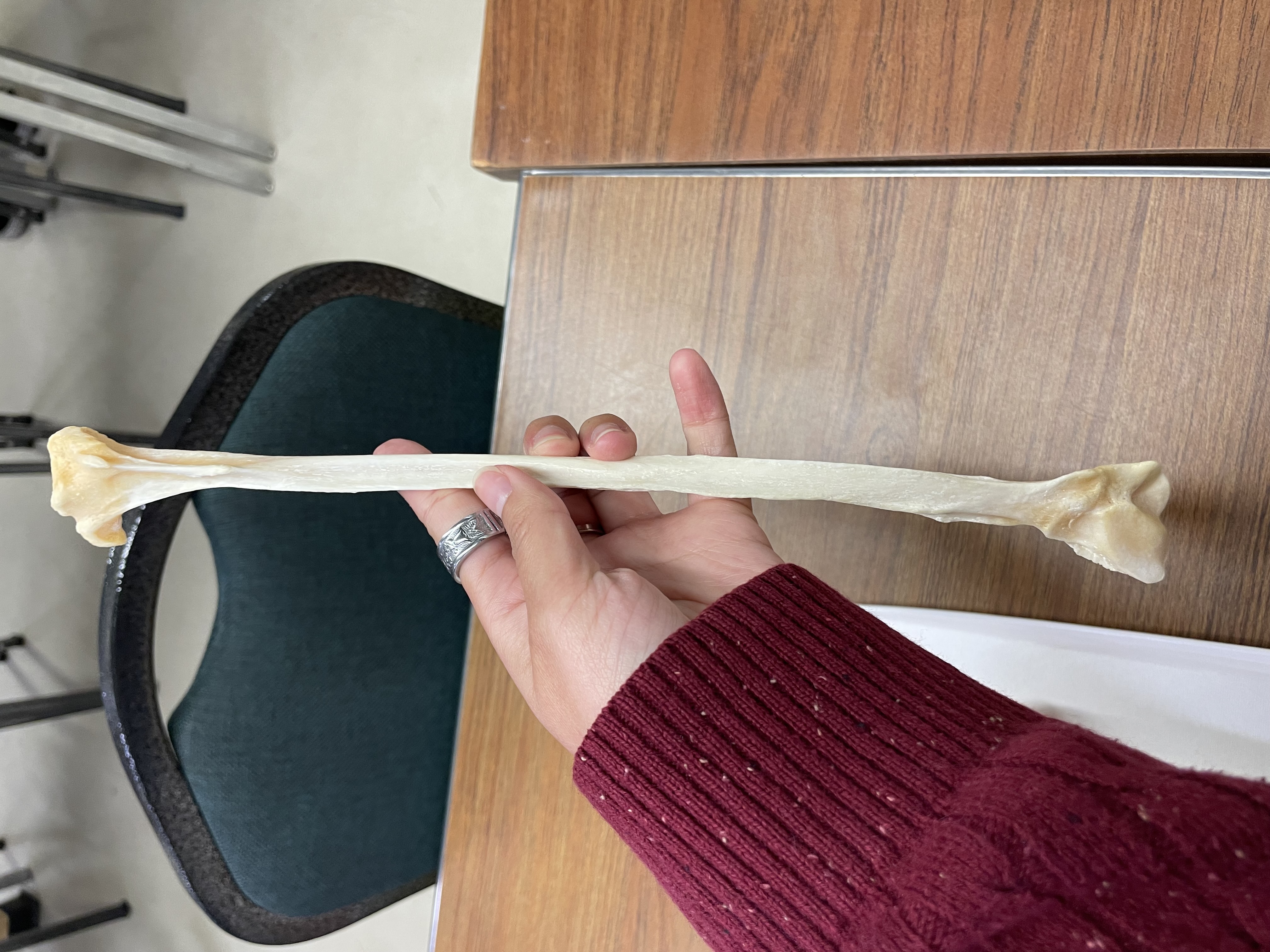
femur
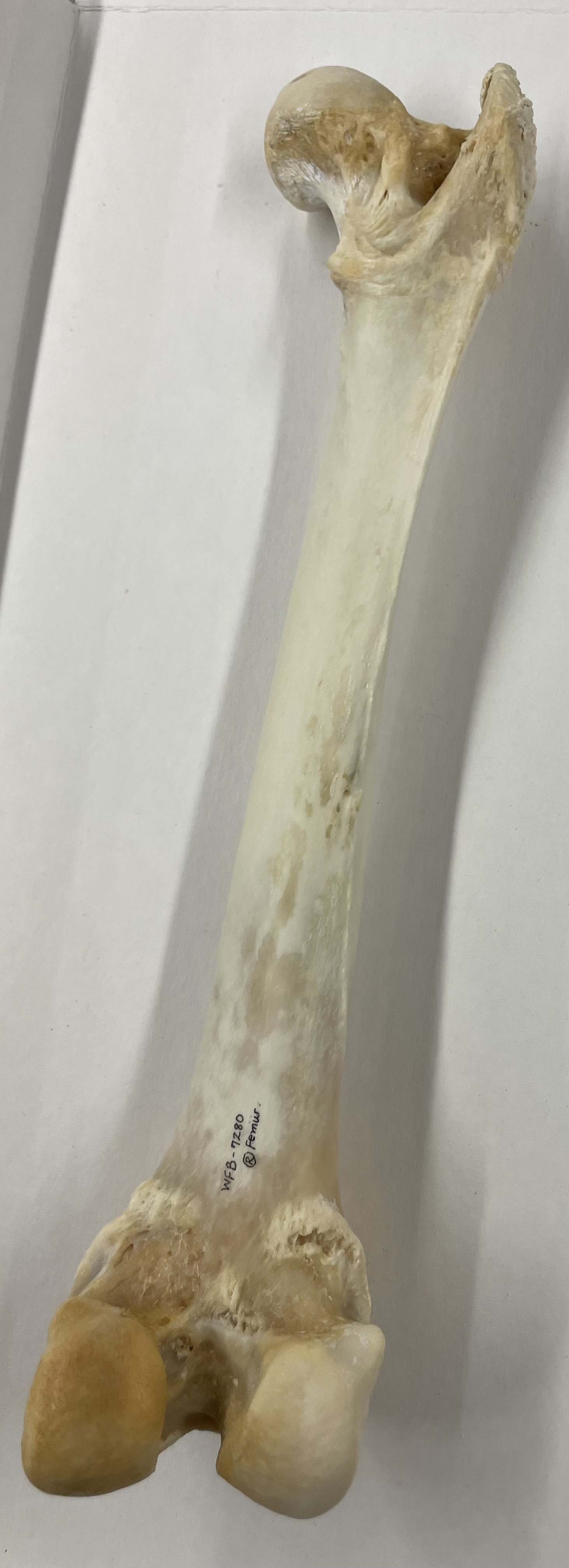
radius
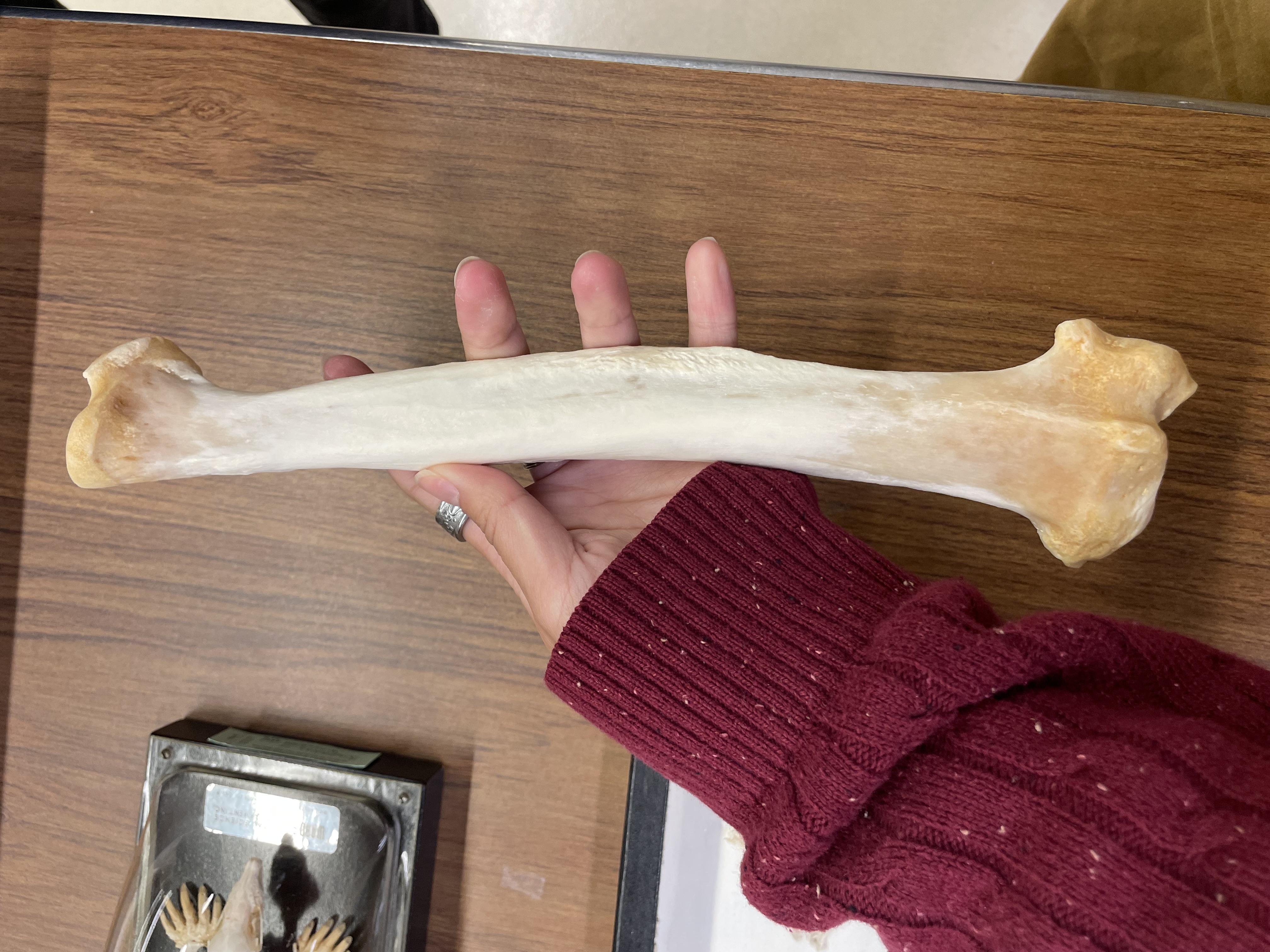
greater tuberosity
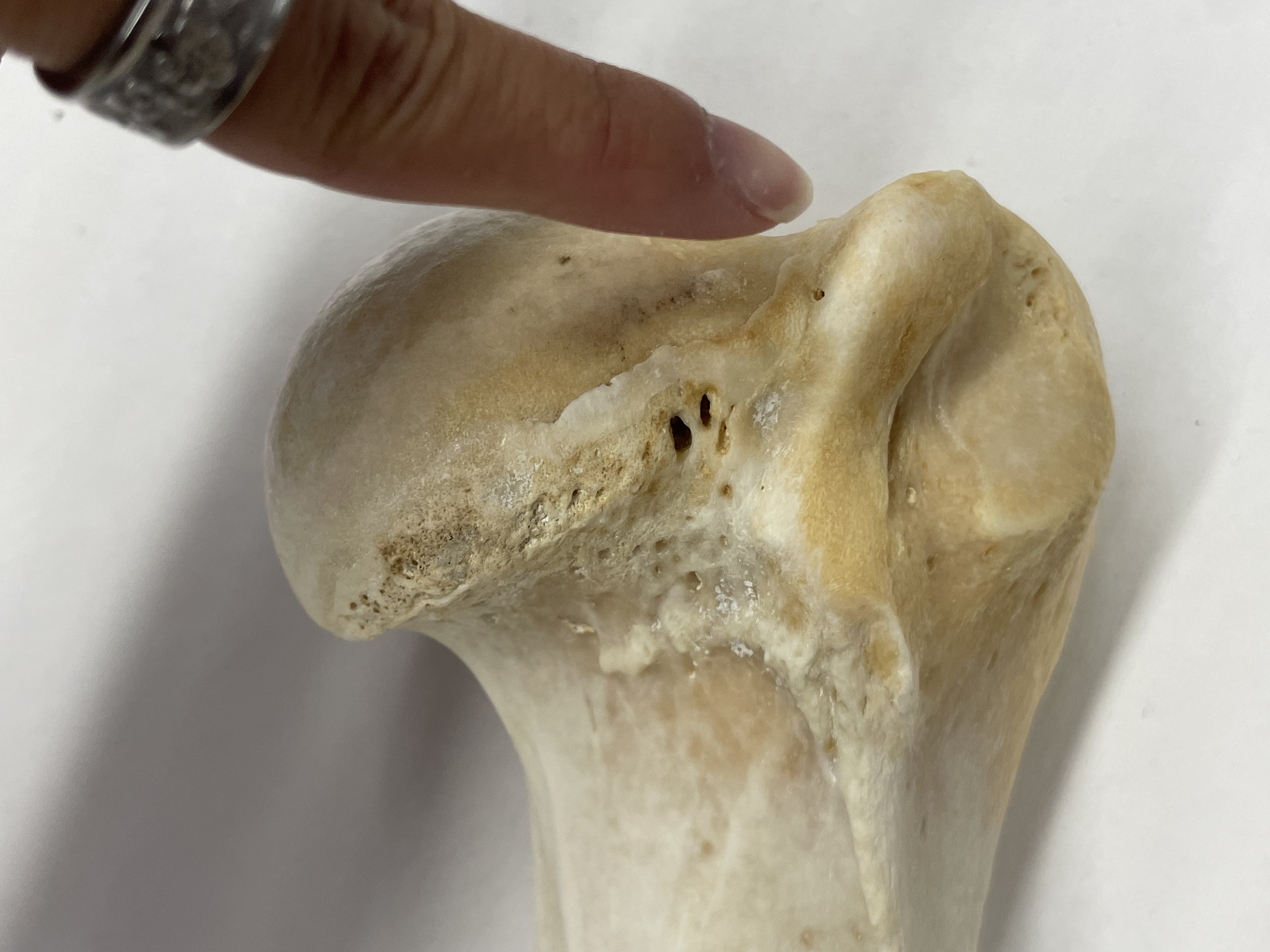
lesser tuberosity
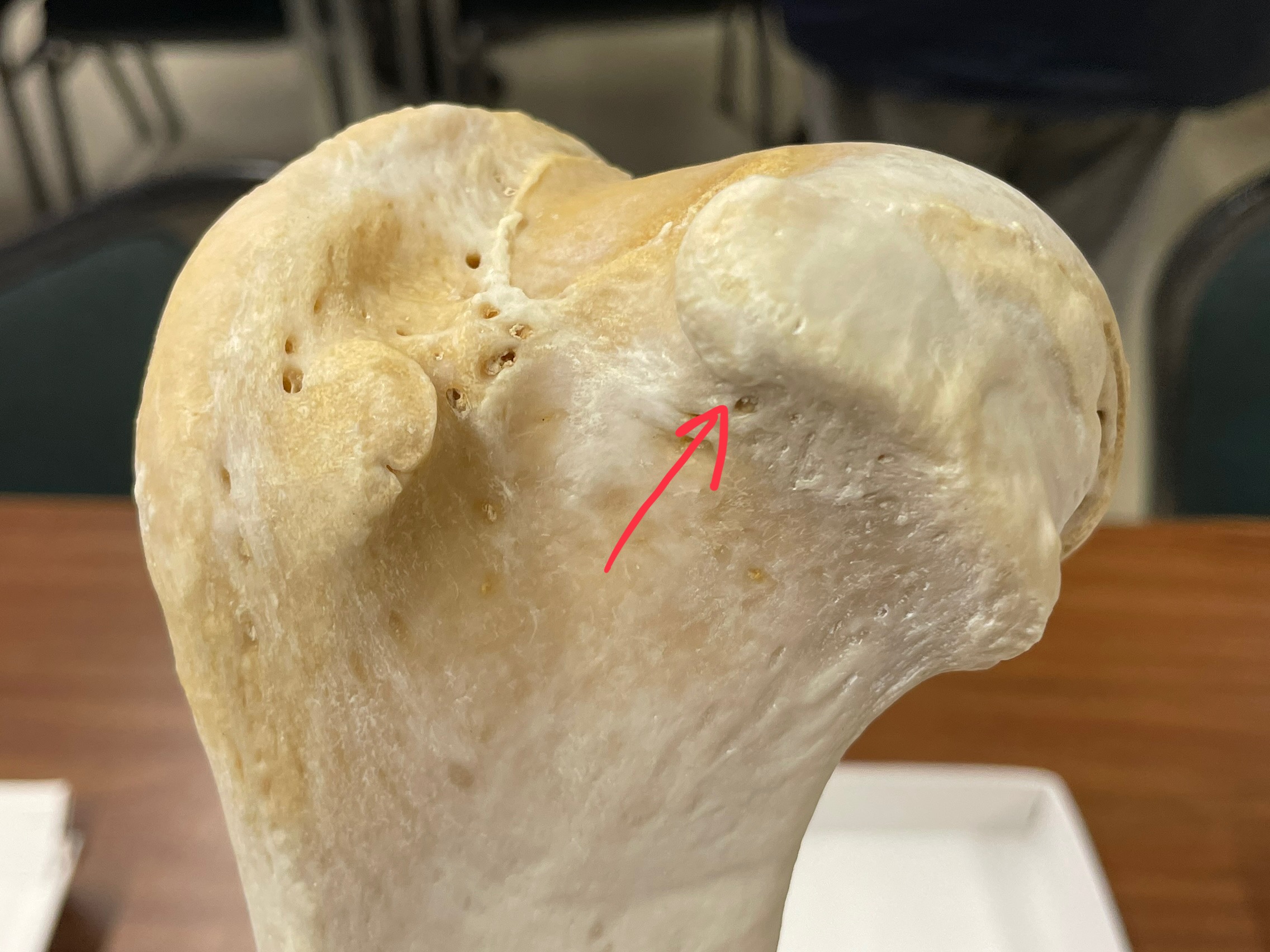
greater trochanter
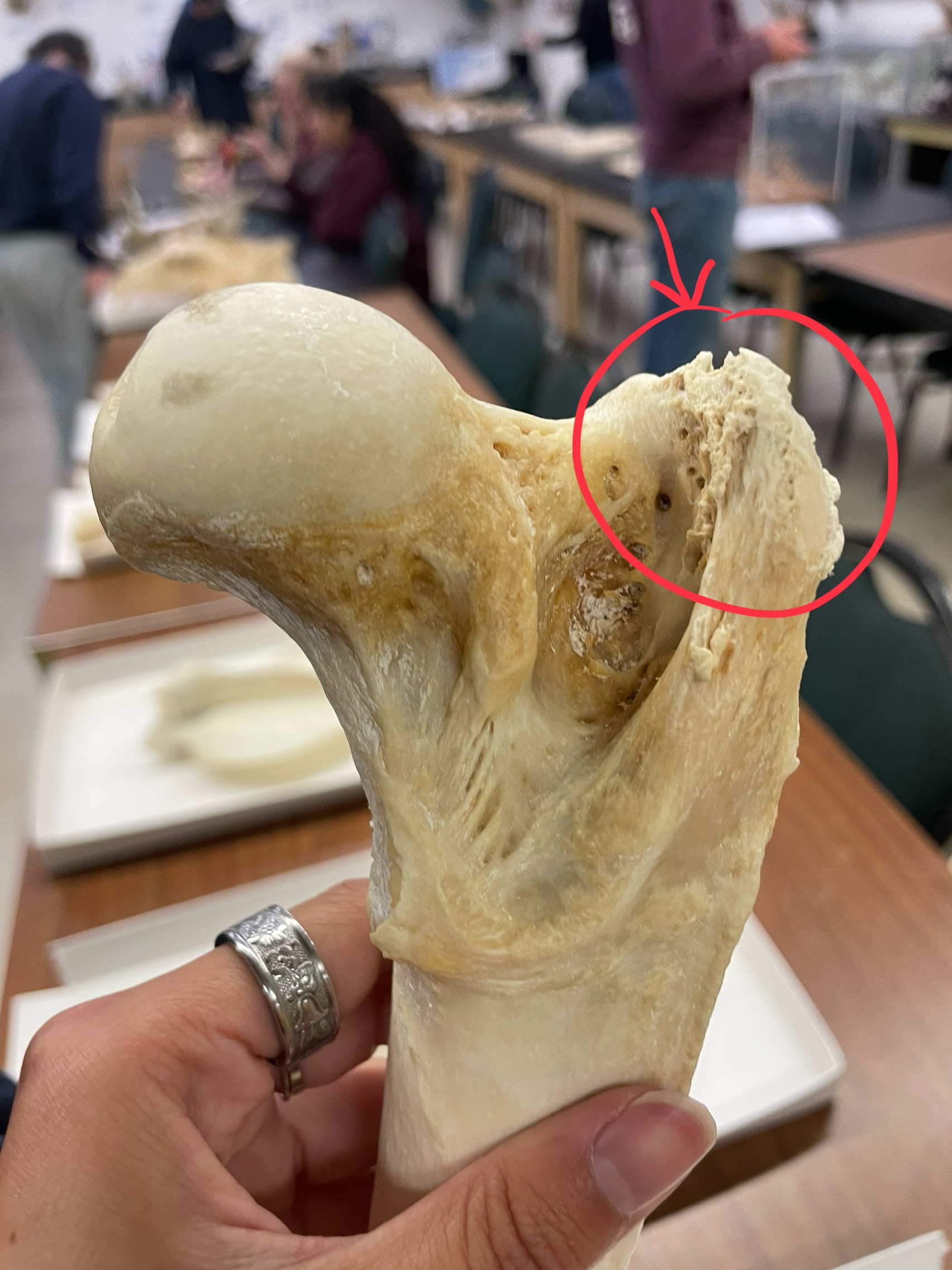
lesser trochanter
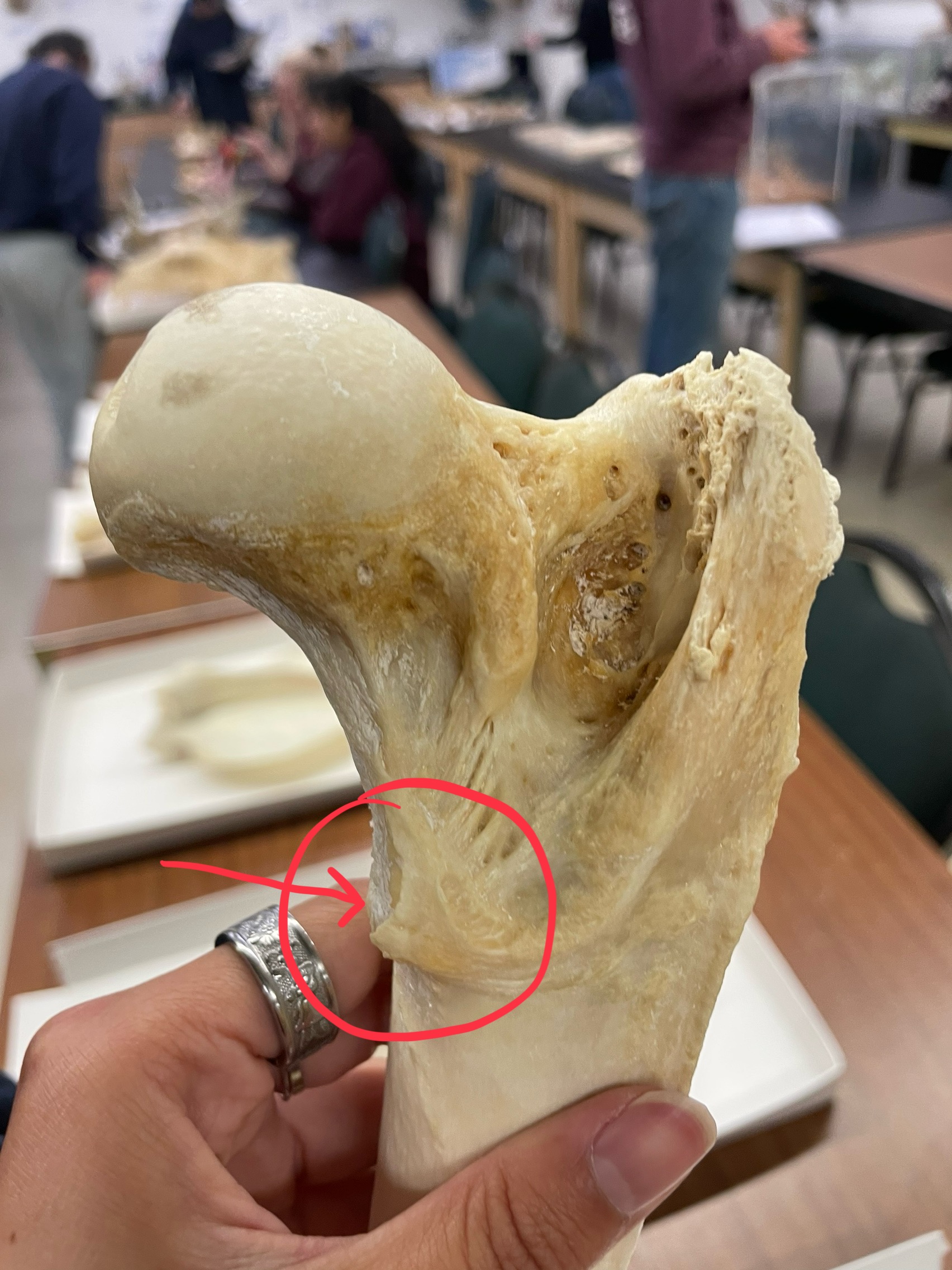
acromium process
left indicator

spine (scapula)
circled portion

coracoid process

lesser tuberosity
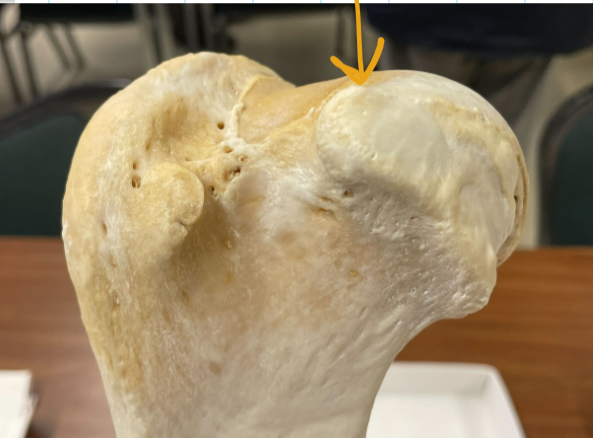
greater tuberosity
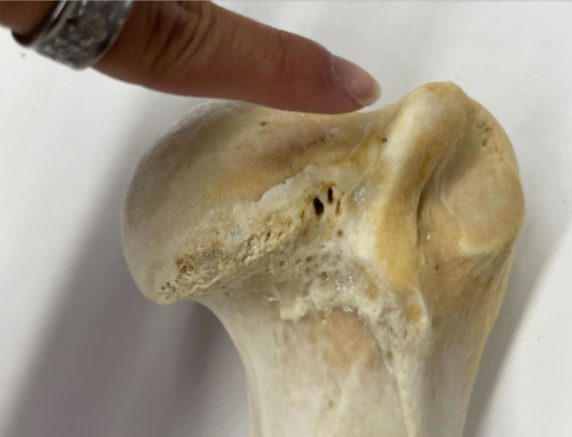
head
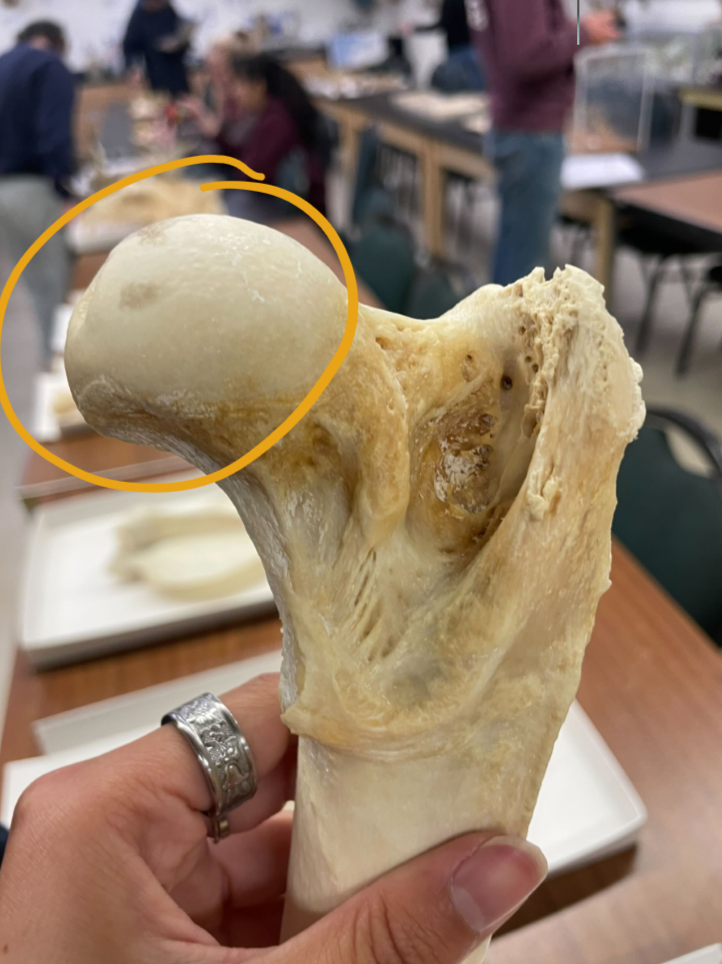
greater trochanter
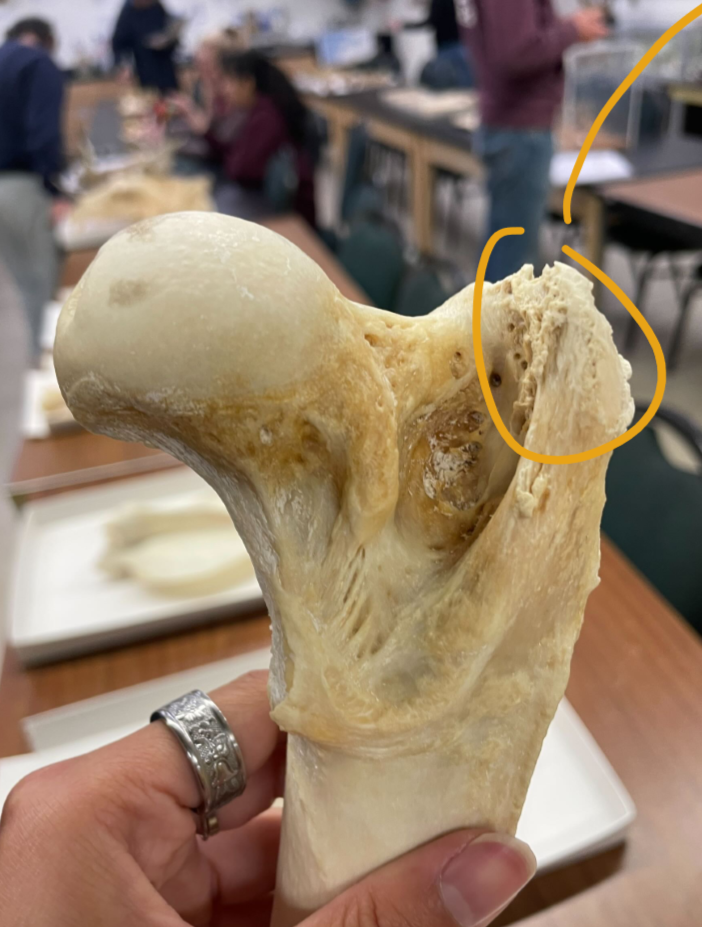
lesser trochanter
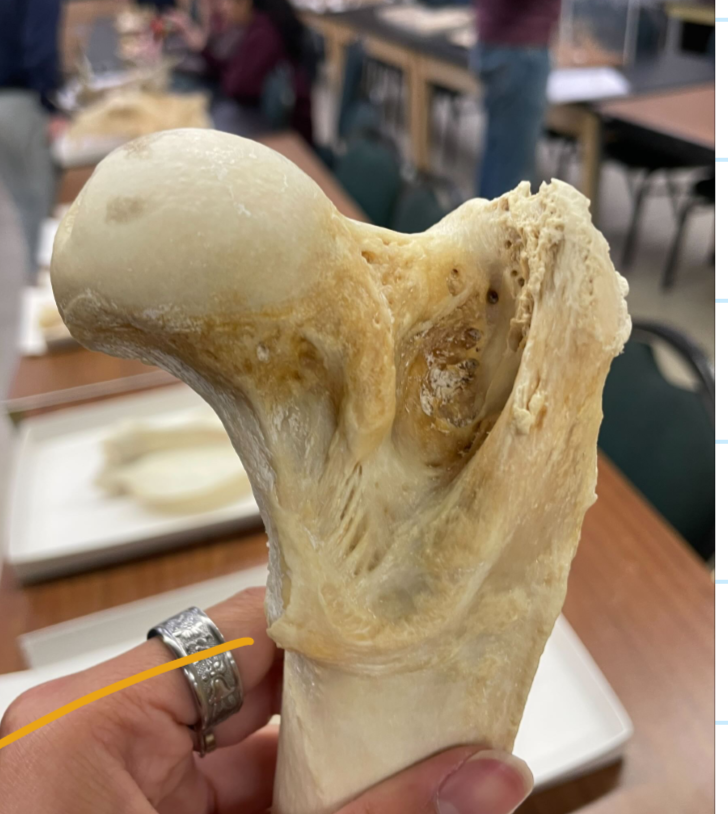
condyles
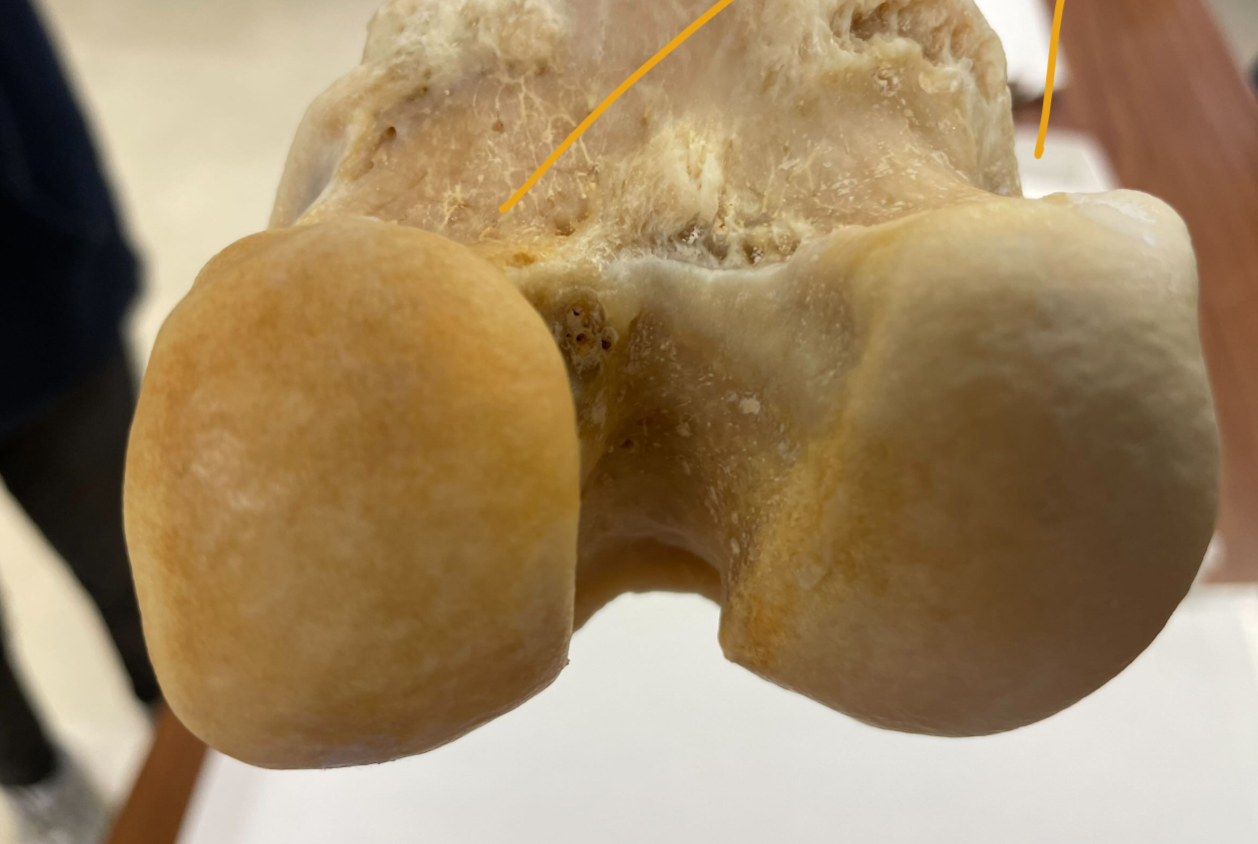
third trochanter
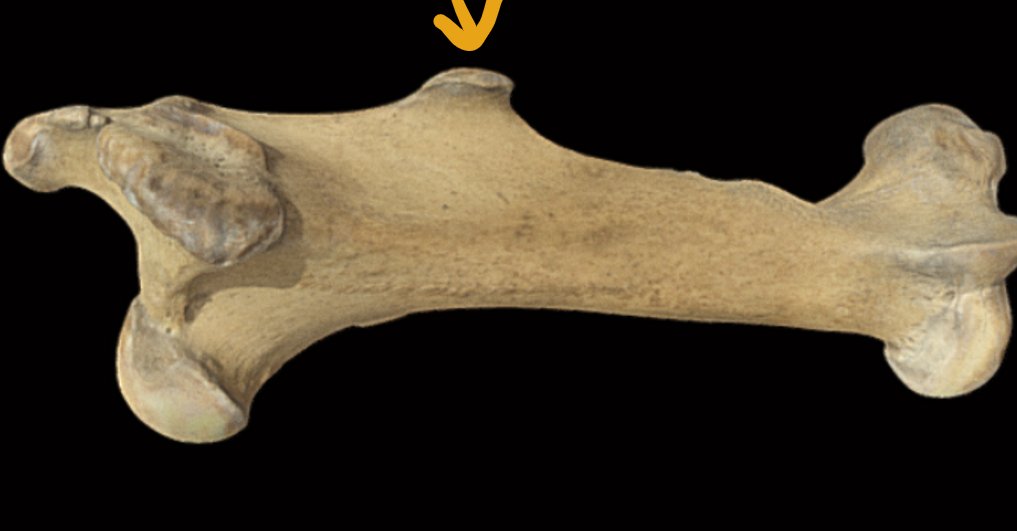
patellar surface
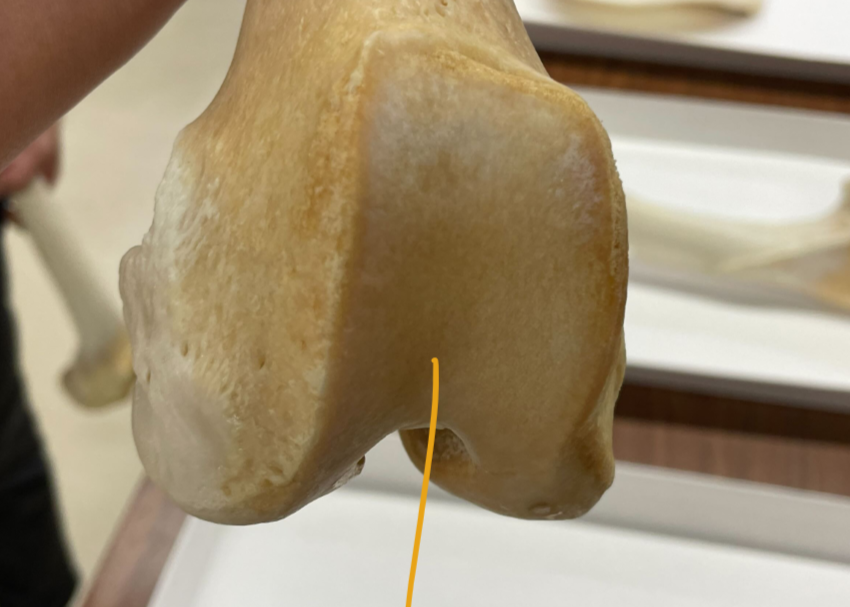
atlas
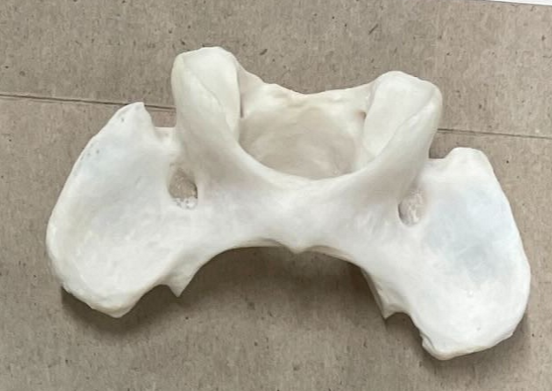
axis
(ignore indicators)

dens
left indicator
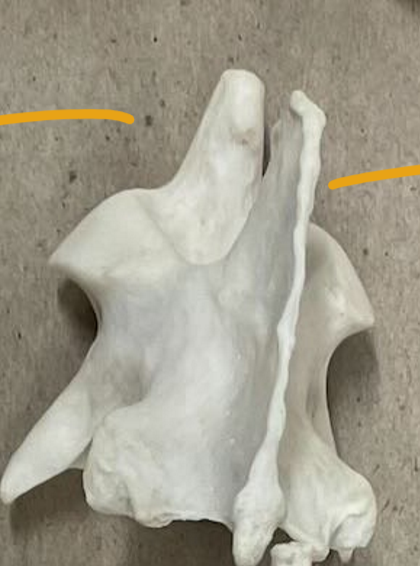
thoracic vertebrate
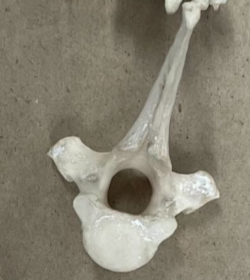
lumbar vertebrate
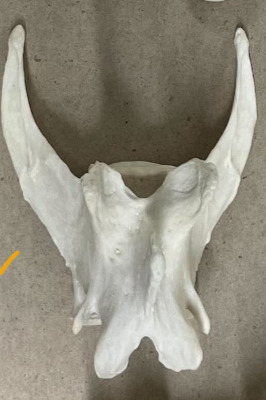
sacral vertebrate
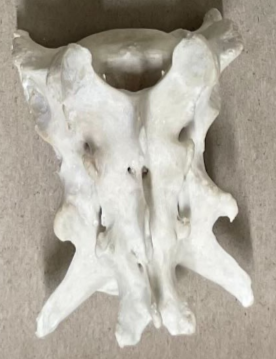
centrum
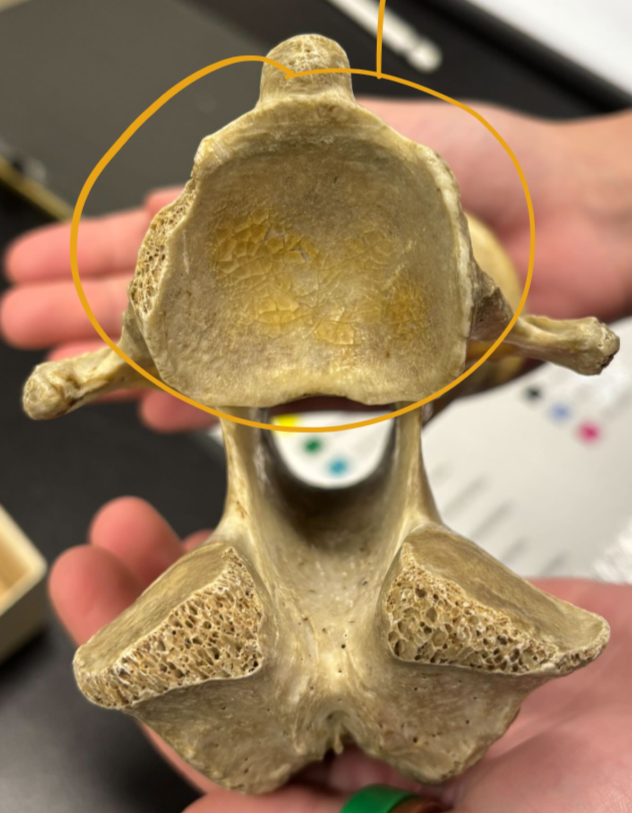
phalanges
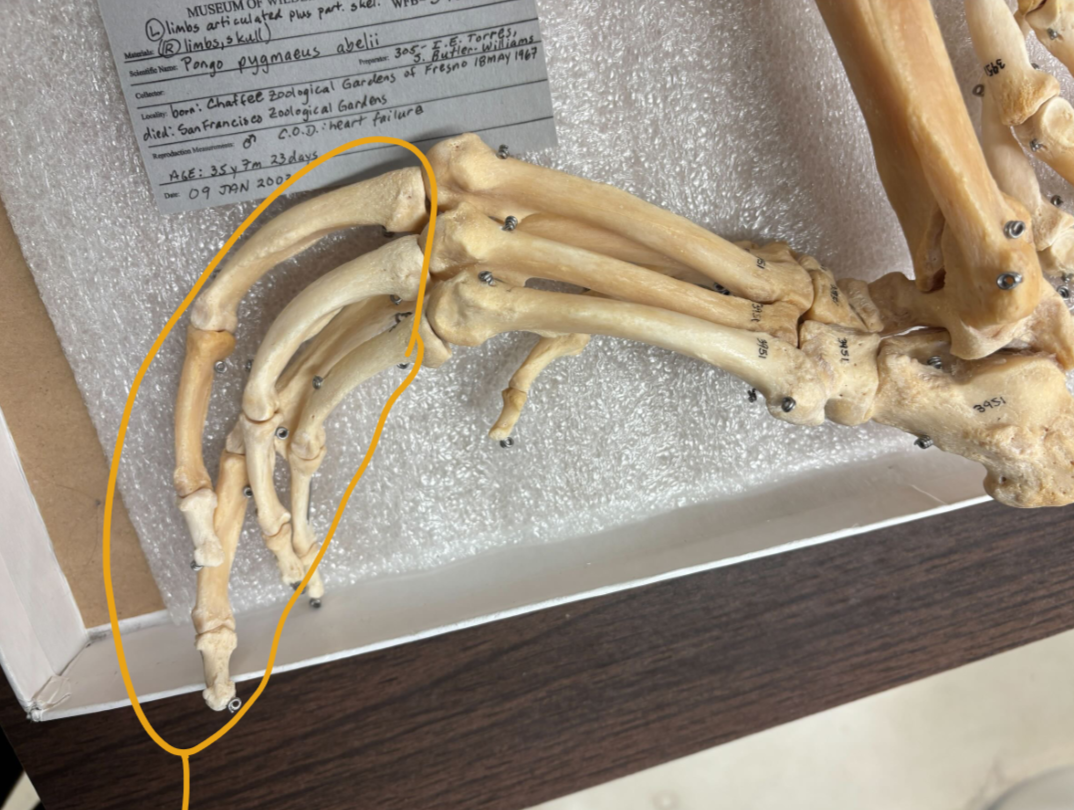
hallux
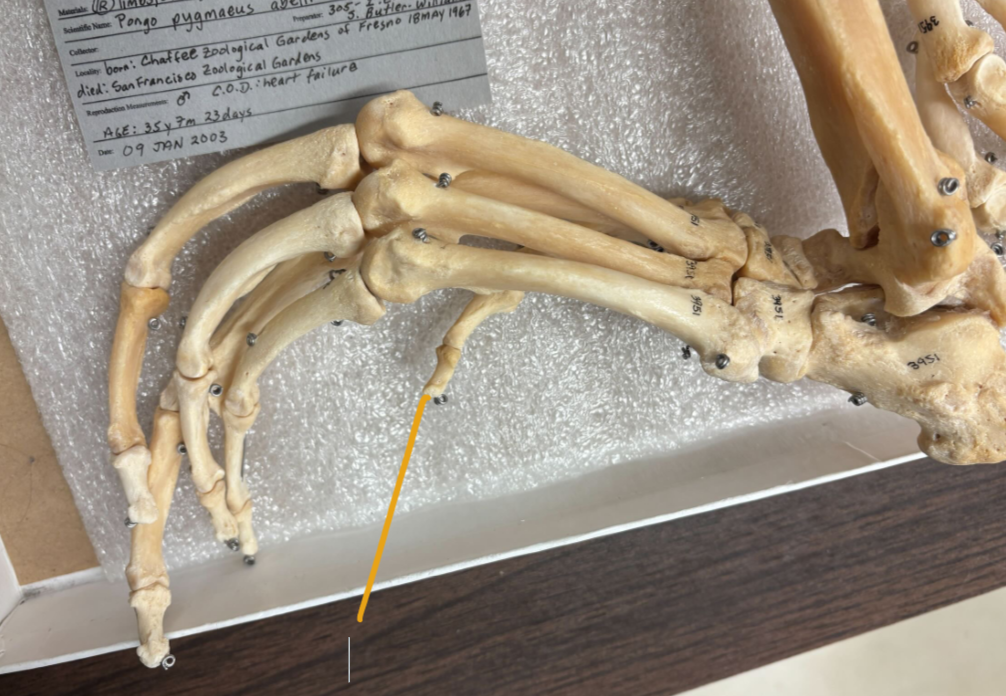
metatarsal
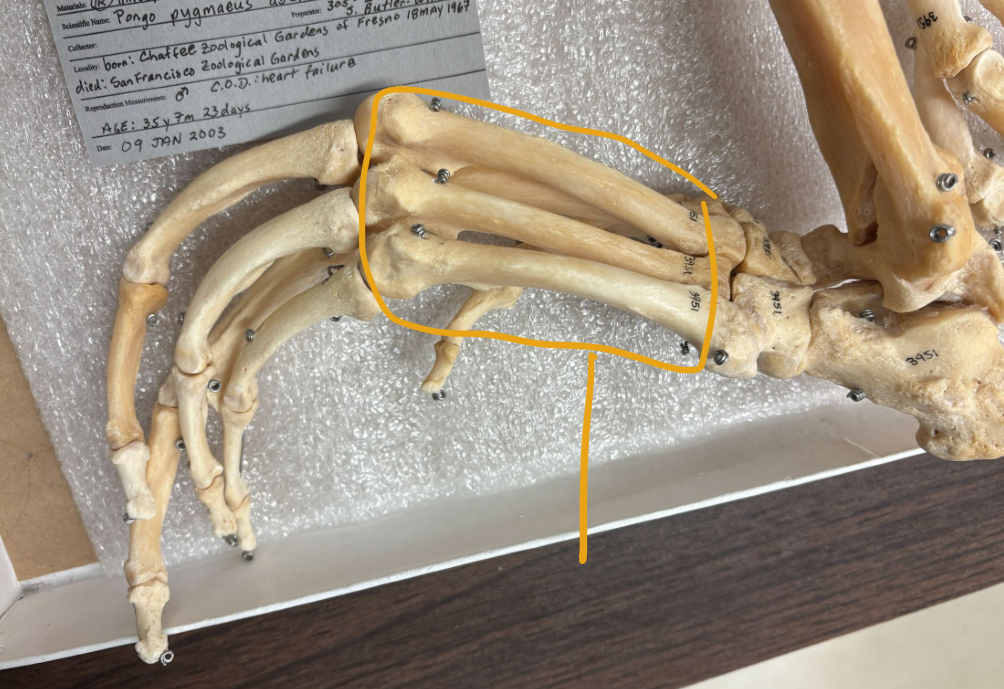
tarsal
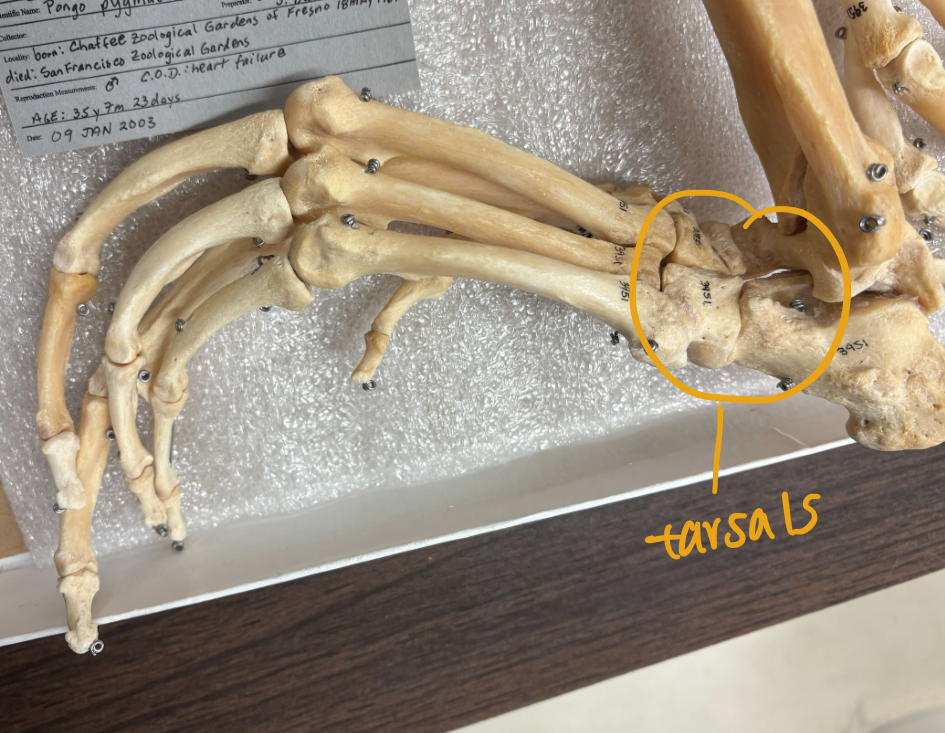
phalanges
#1
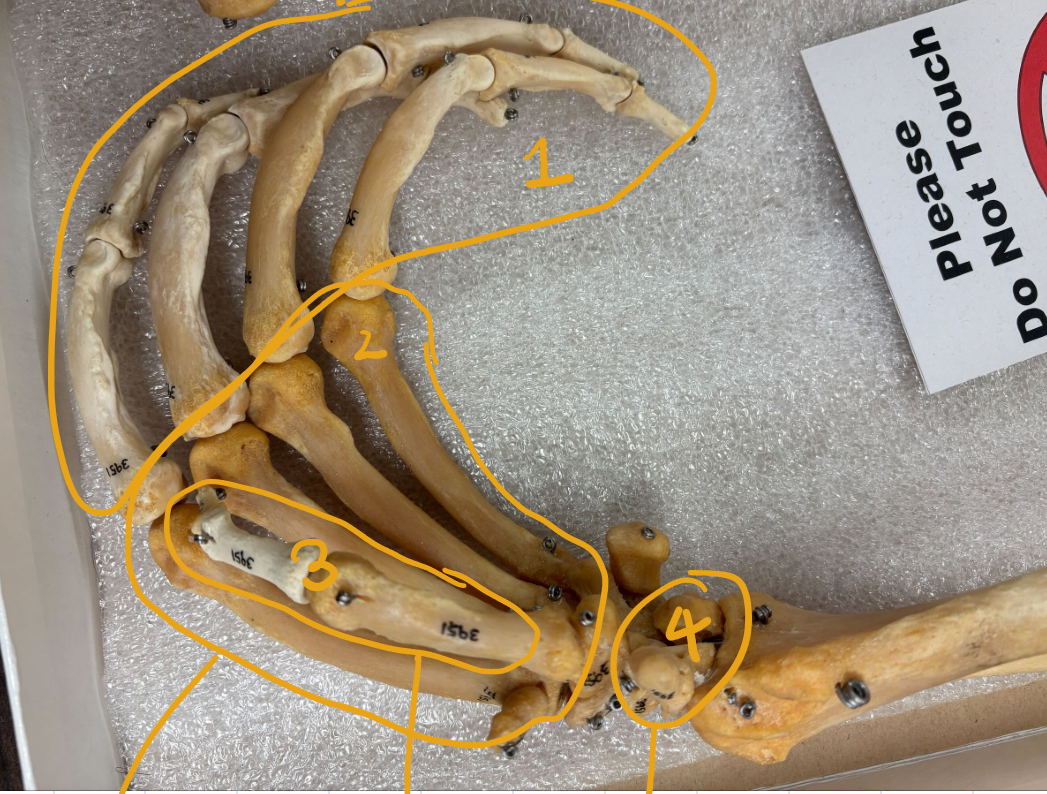
metacarpals
#2
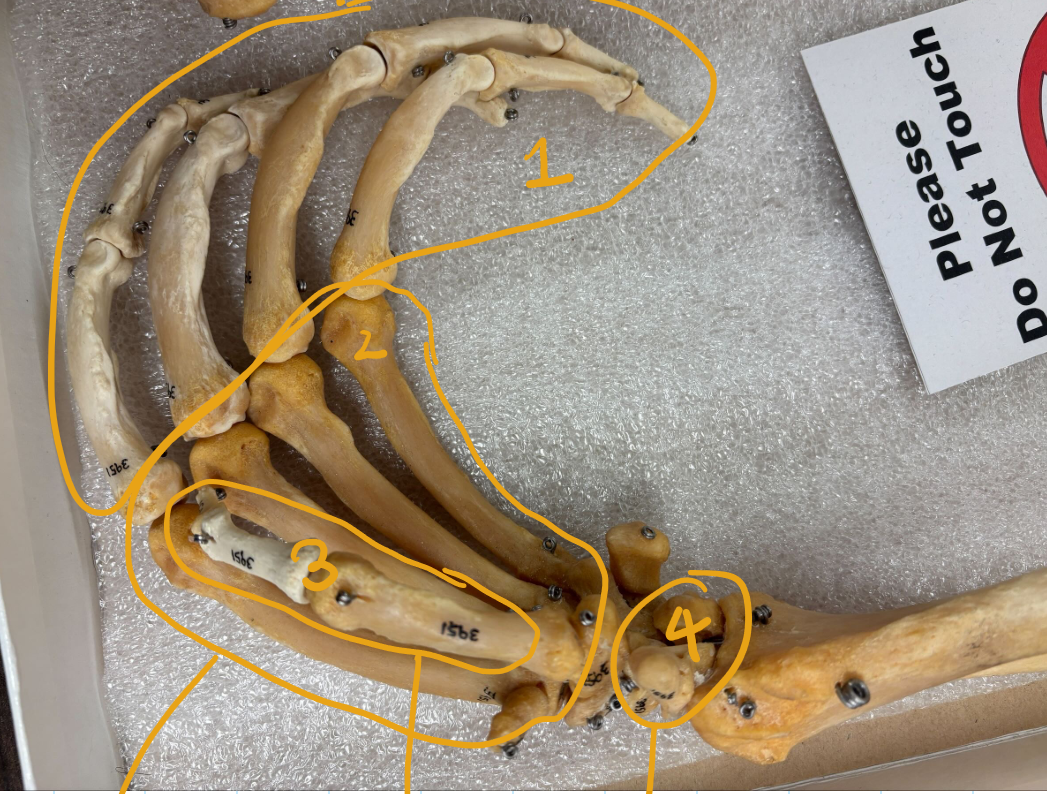
pollux
#3
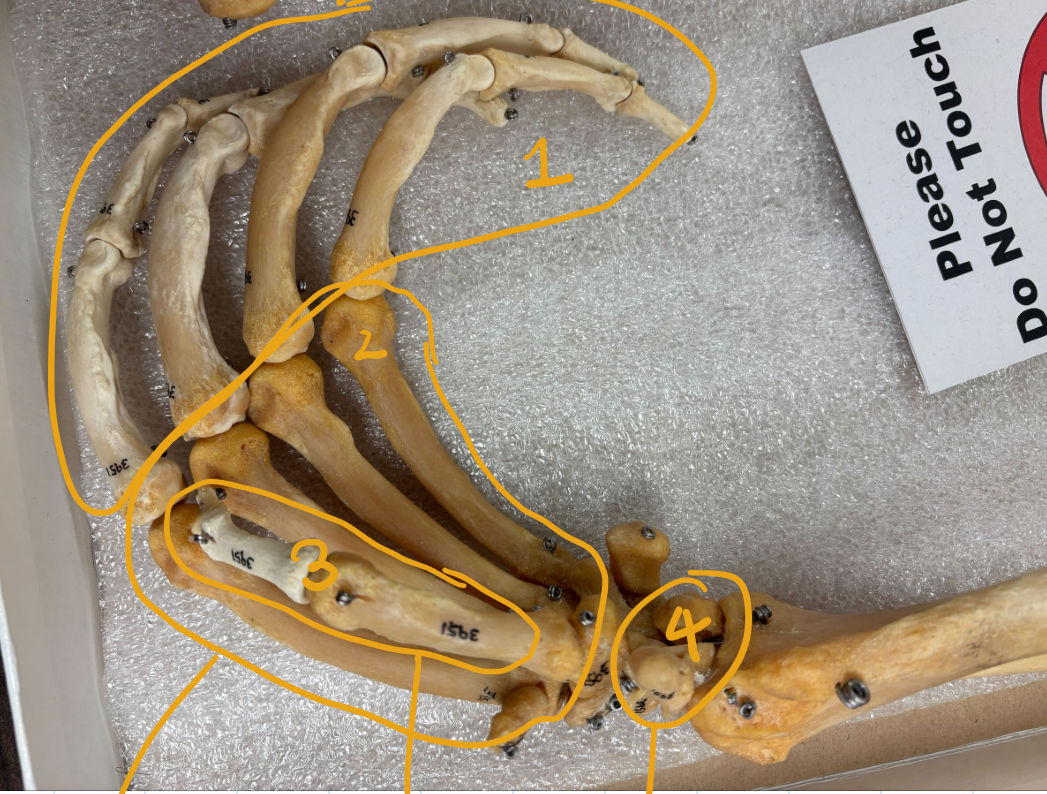
carpals
#4
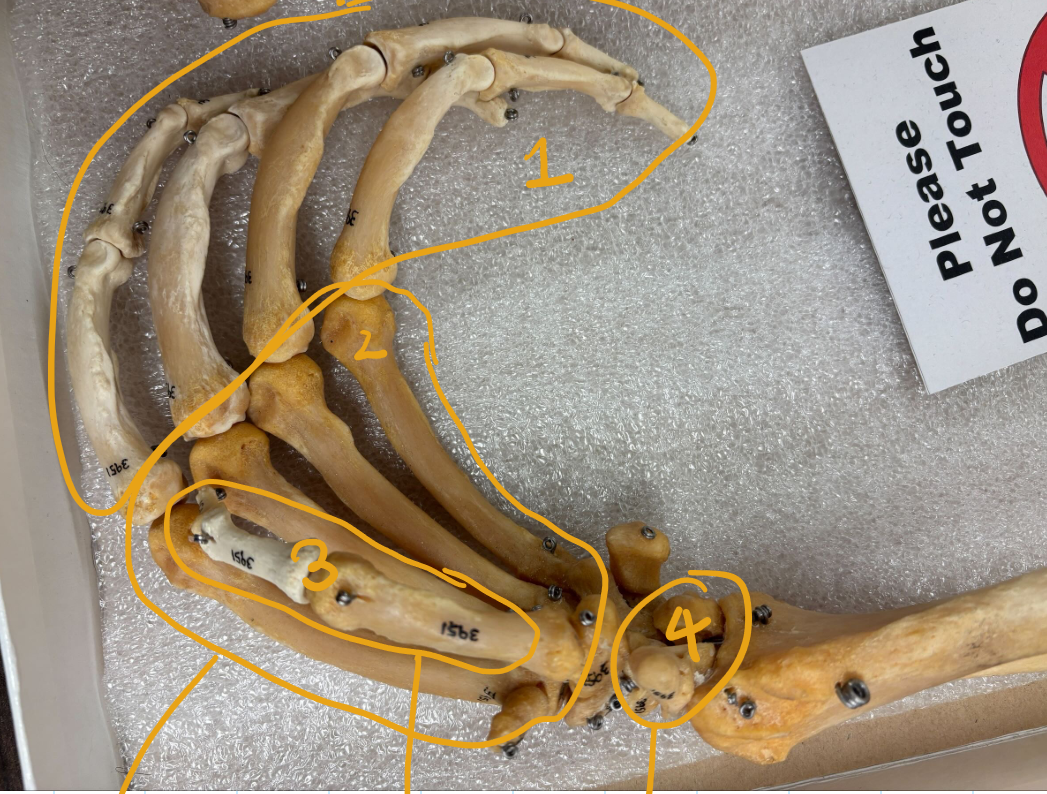
ilium
#1
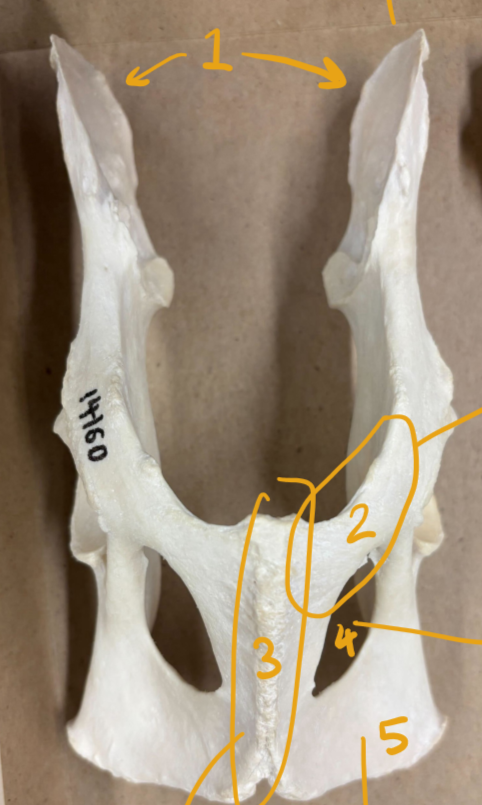
pubis
#2
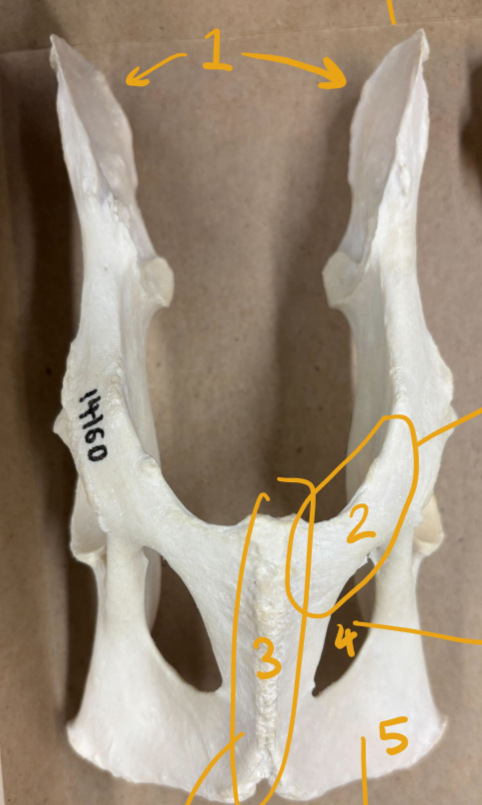
pubic symphysis
#3
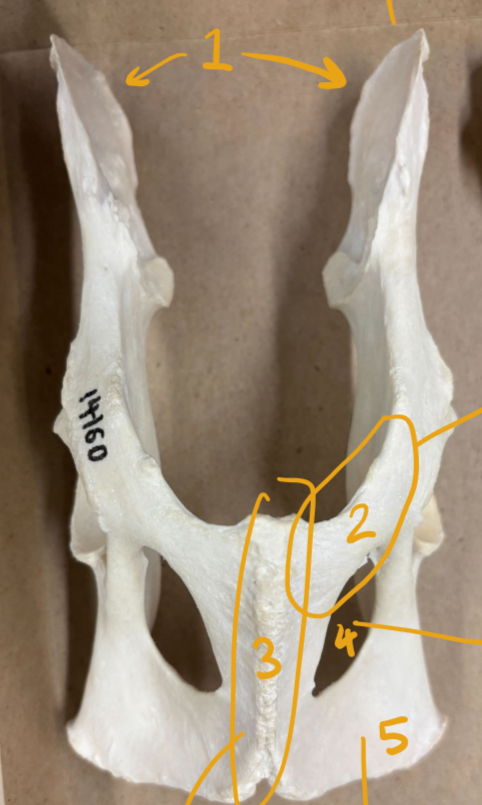
obturator foramen
#4
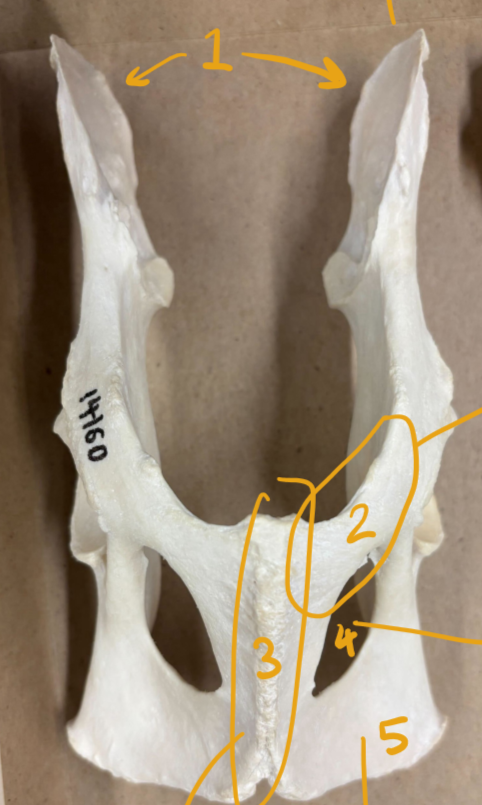
ischium
#5
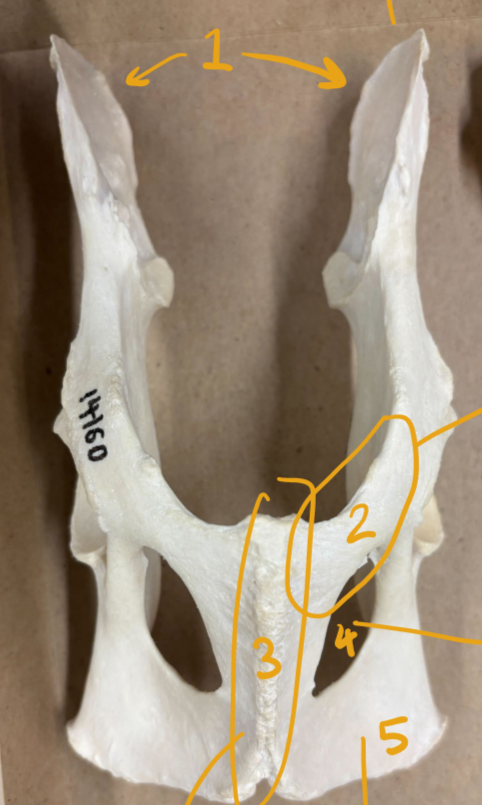
ascetabulum
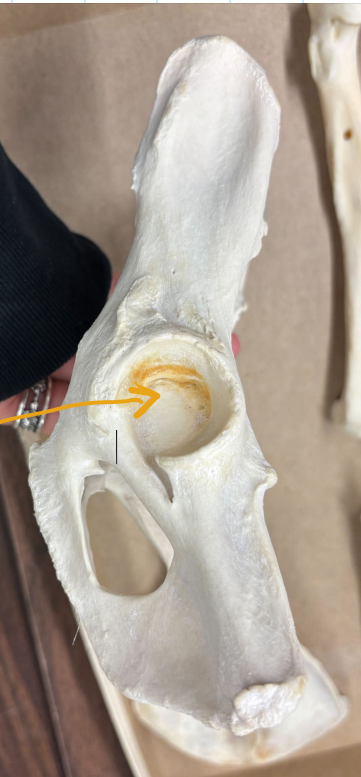
manubrium
#1
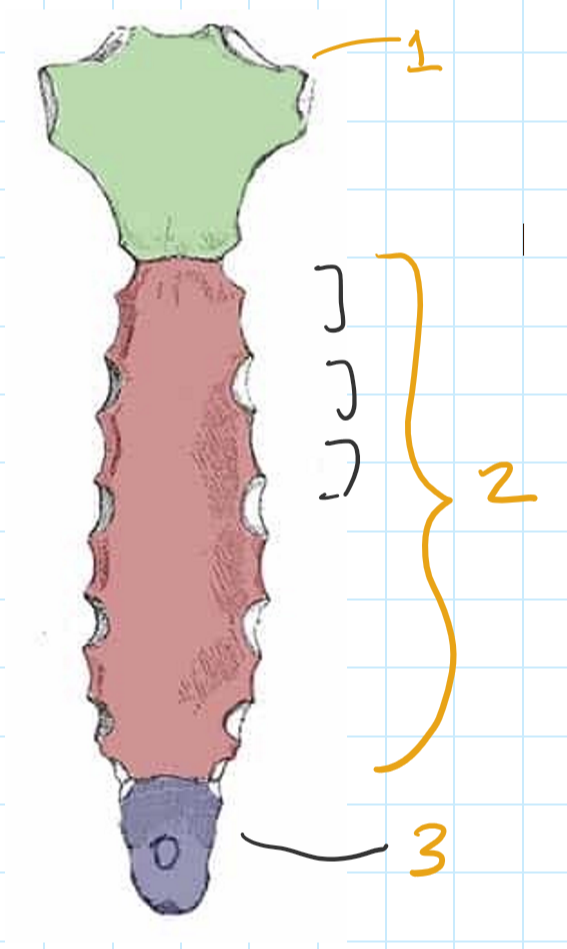
sternubrae
#2
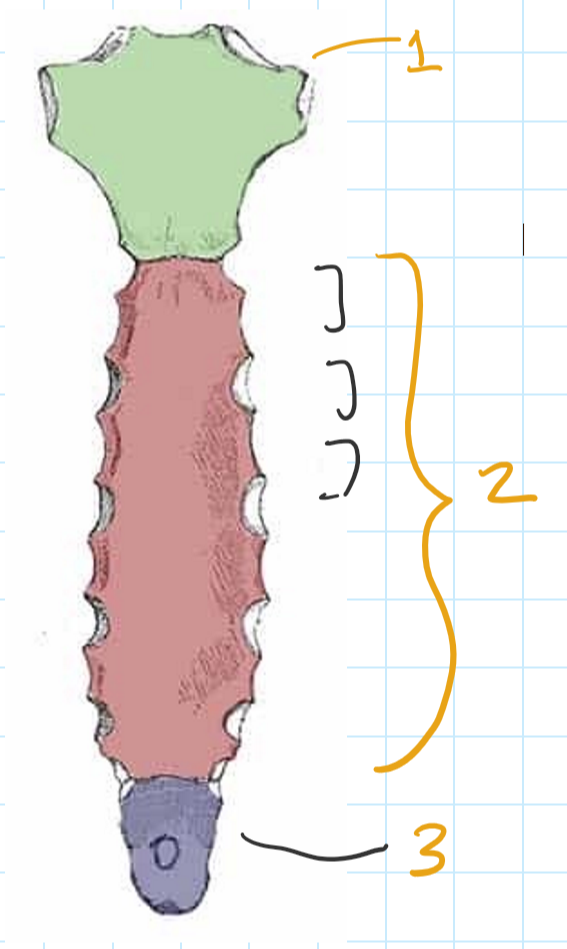
xiphoid process
#3
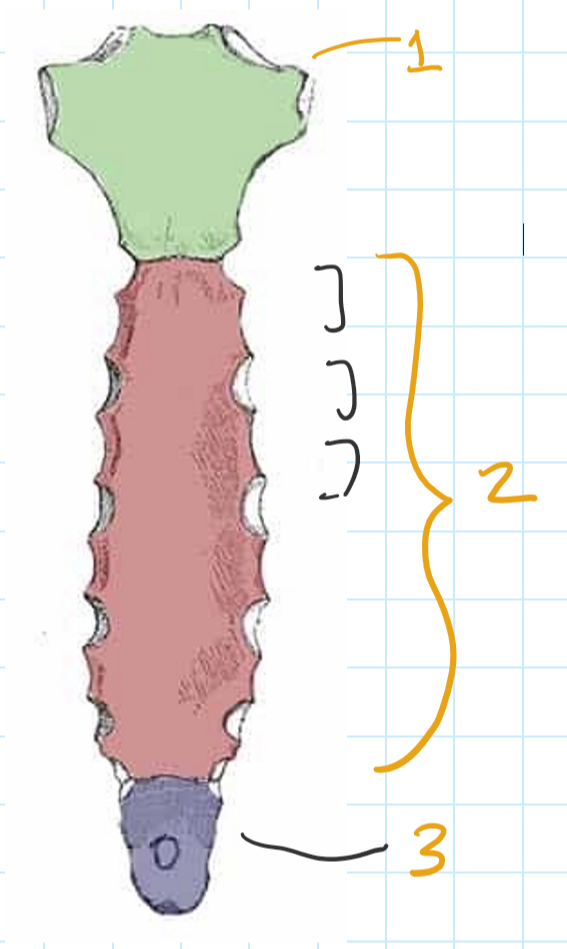
definitive growth
pelage that is shed and replaced
angora growth
pelage that grows continuously
pelage
total body covering of hair
vibrissae
long stiff hairs that are also tactile receptors
awn
most common type of guard hair that is on the outer layer of most mammals. exhibits definitive growth
bristles
firm hairs that exhibit continuous growth. can be stiff and enlarged like quills/spines
wool
long, soft, often curly underfur with angora growthfur
fur
relatively short underfur with definitive growth
post-juvenile molt
the change from juvenile to adult pelage or fur, involving the shedding and replacement of hair.
annual molt
molt that replaces hairs that are worn
seasonal molt
molt that occurs periodically/seasonally for camouflage and to adapt to changing seasons
protocone
tip/point of the trigon on the upper molars (#2)
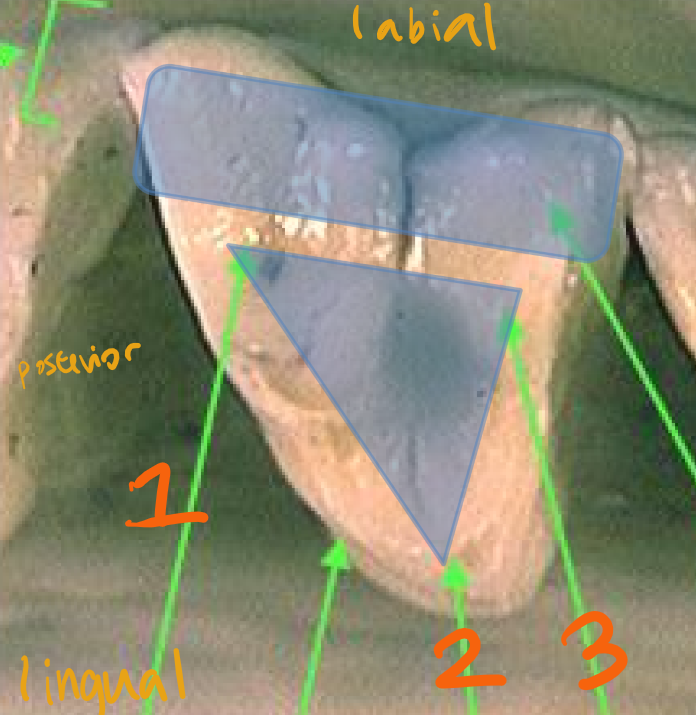
metacone
back-facing/posterior cusp of the trigon on the upper molars. (#1)
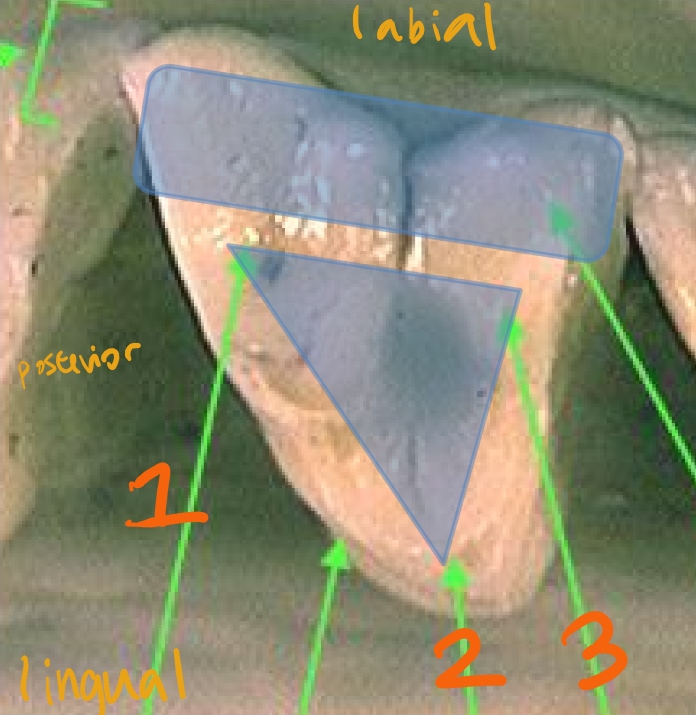
paracone
front-facing/anterior cusp of the trigon on the upper molars (#3)
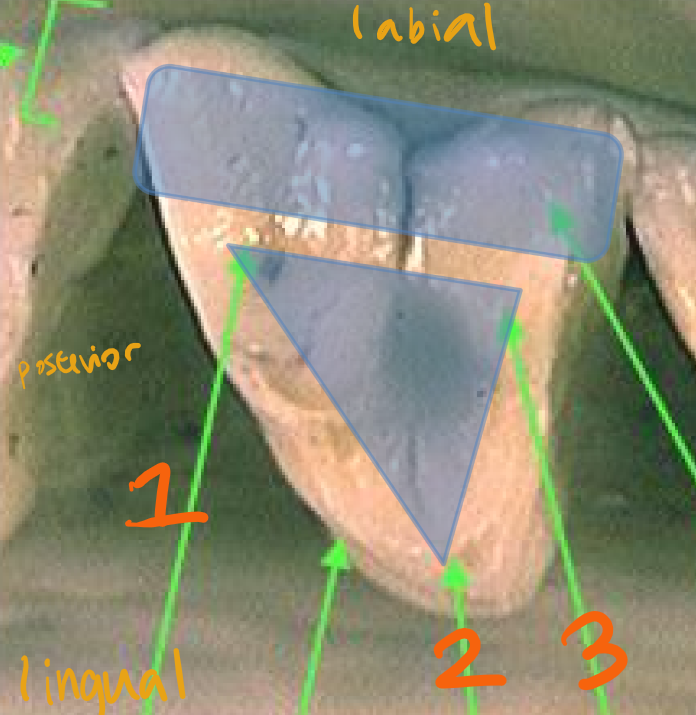
tribosphenic molar
type of molar usually associated with earlier mammals
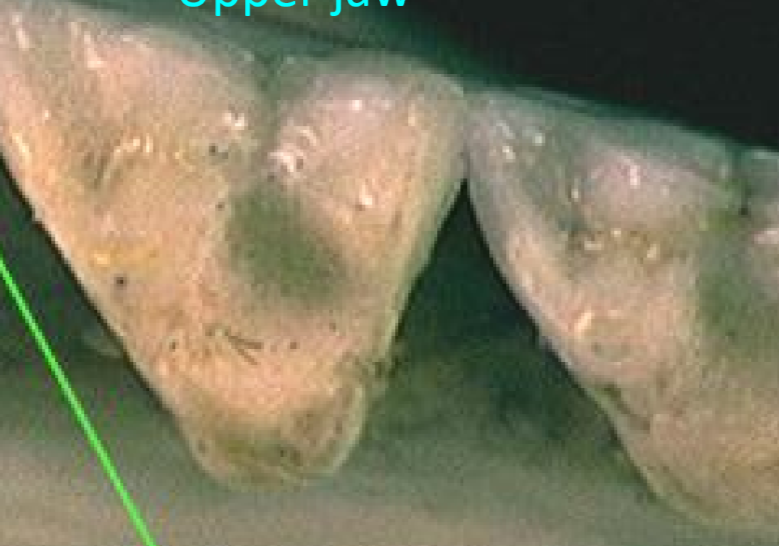
protoconid
tip/point of the trigon on the lower molars (#1)

metaconid
back-facing/posterior cusp of the trigonid on the lower molars. (#2)
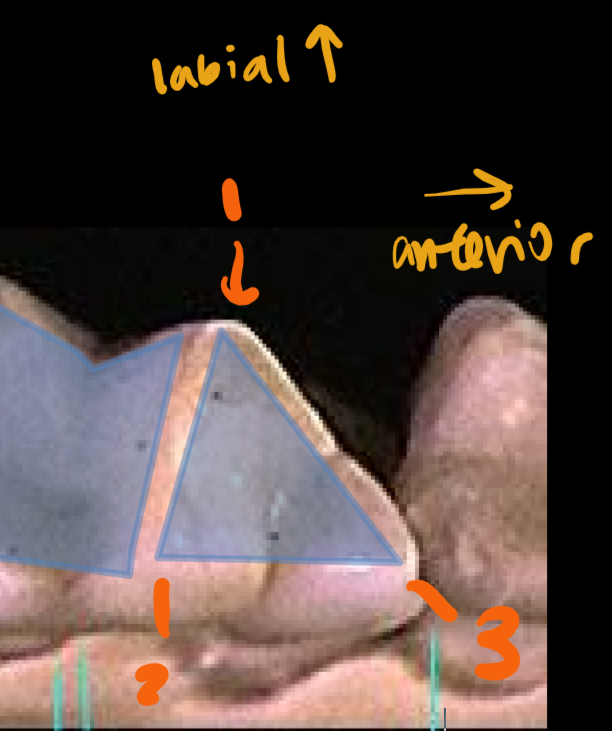
paraconid
front-facing/anterior cusp of the trigonid on the lower molars (#3)
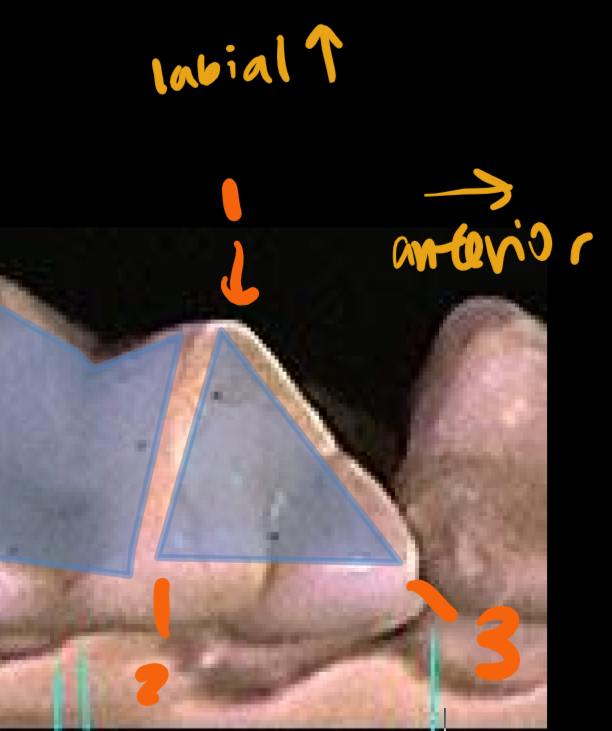
quadrate molar
type of molar with four cusps
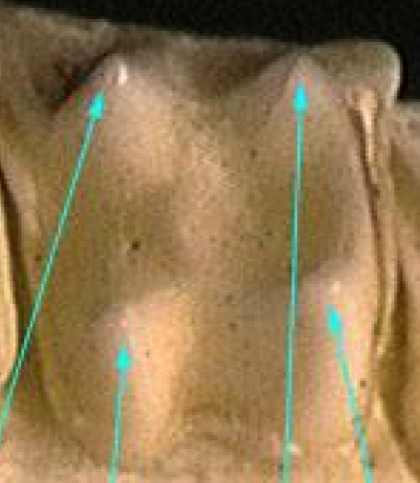
hypocone
extra posterior and lingual (bottom left) cusp present on quadrate molar
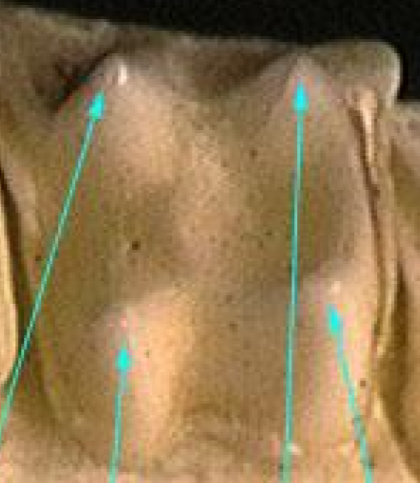
dilambdodont
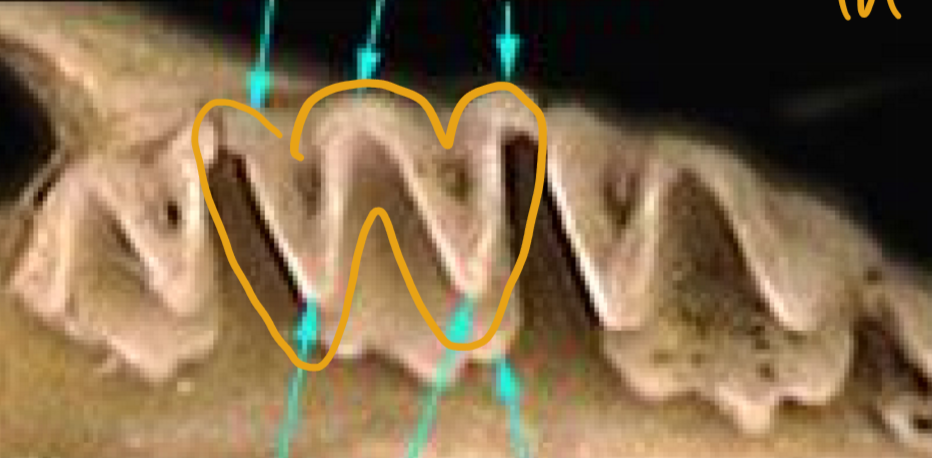
selenodont

lophodont
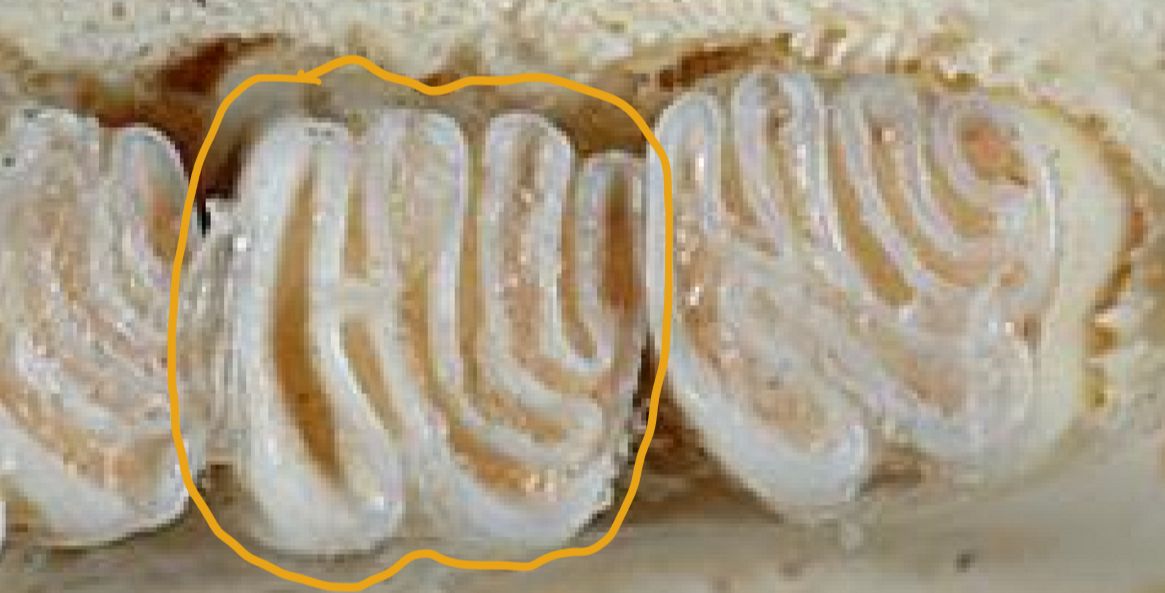
bunodont
molars that have low, rounded cusps used for grinding and crushing (omnivores)
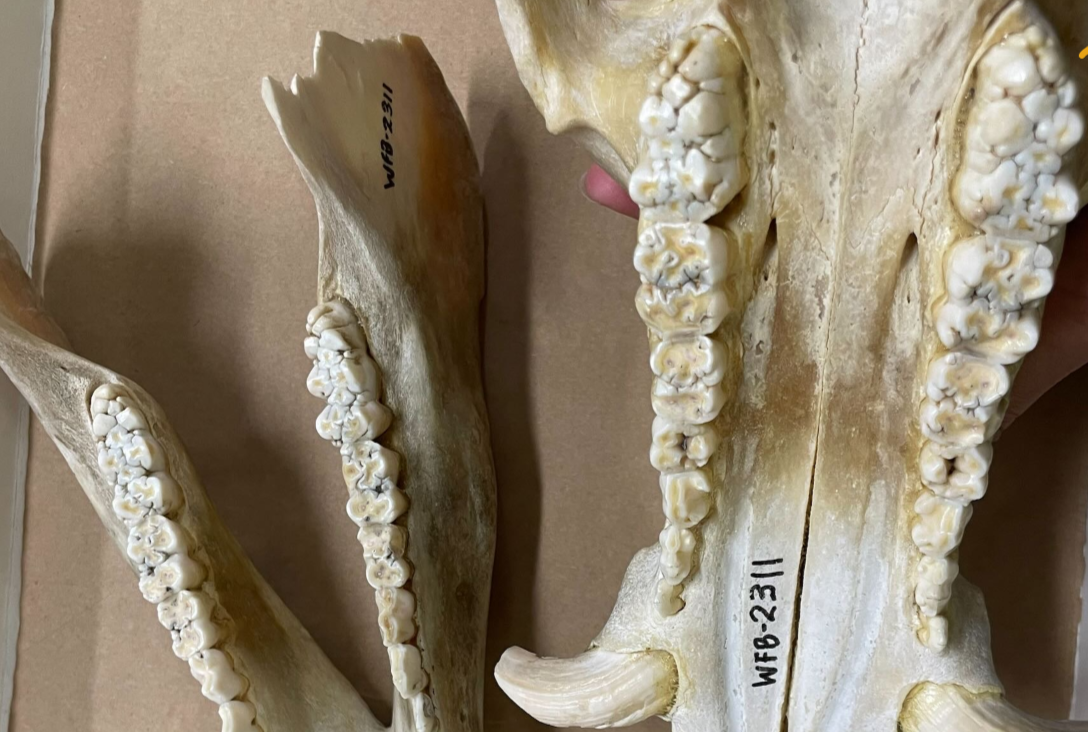
carnassial (P4/m1)
a type of secodont tooth used for shearing. (what is the dental formula?)
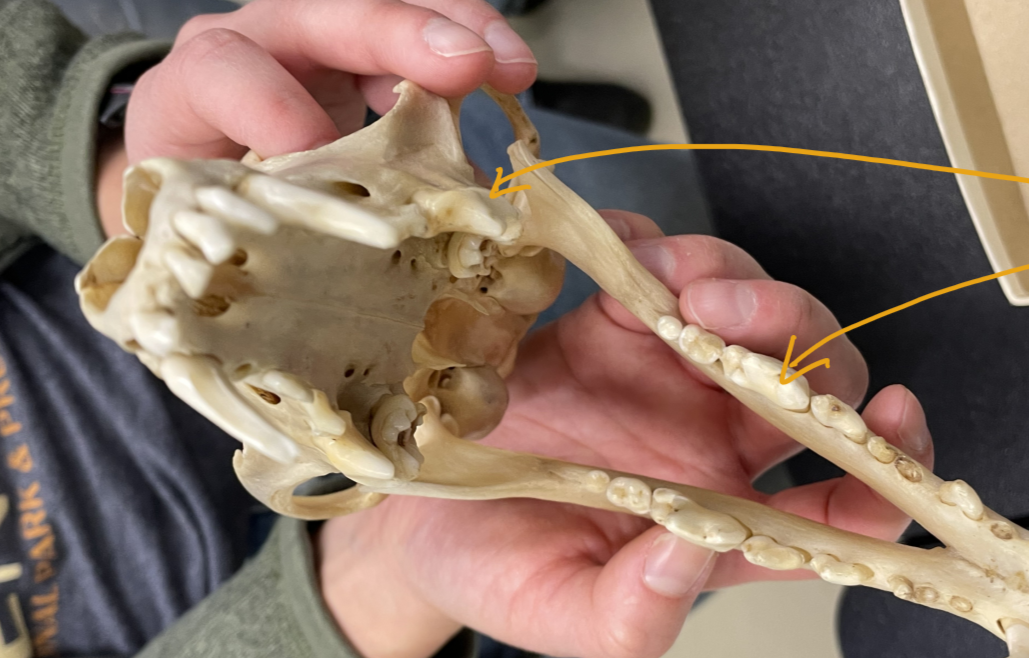
plagiaulacoid
serrated teeth for grinding vegetation. (PM3, pm3)
horns
permanent head ornamentation, projection of the frontal bone.
males, sometimes females
pronghorn
head ornamentation that is shed annually, with a prong
males and females
antlers
head ornamentation that is shed annually. solid bone that is covered by velvet
males only (except caribou)
burr
#1
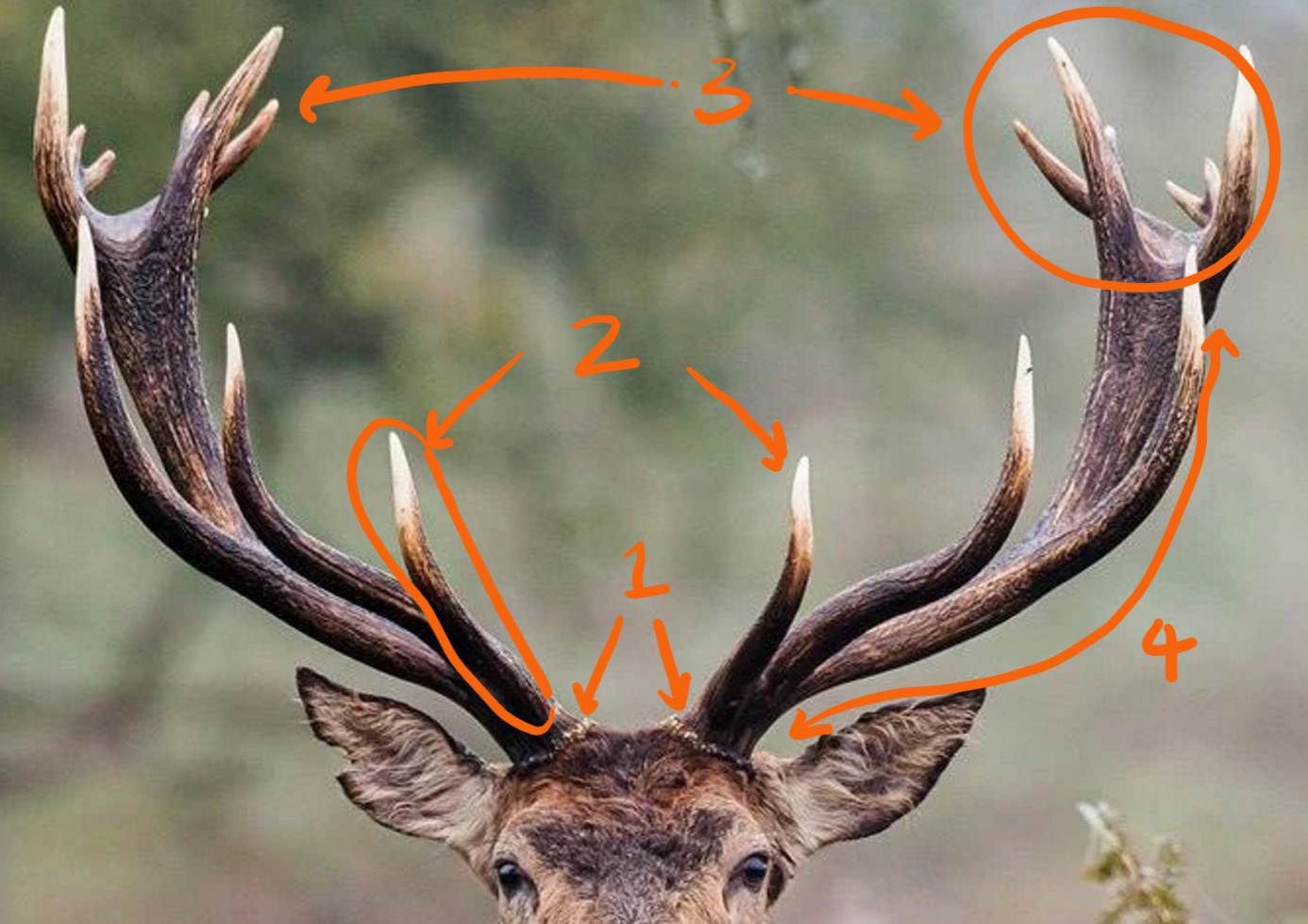
brow tines
#2
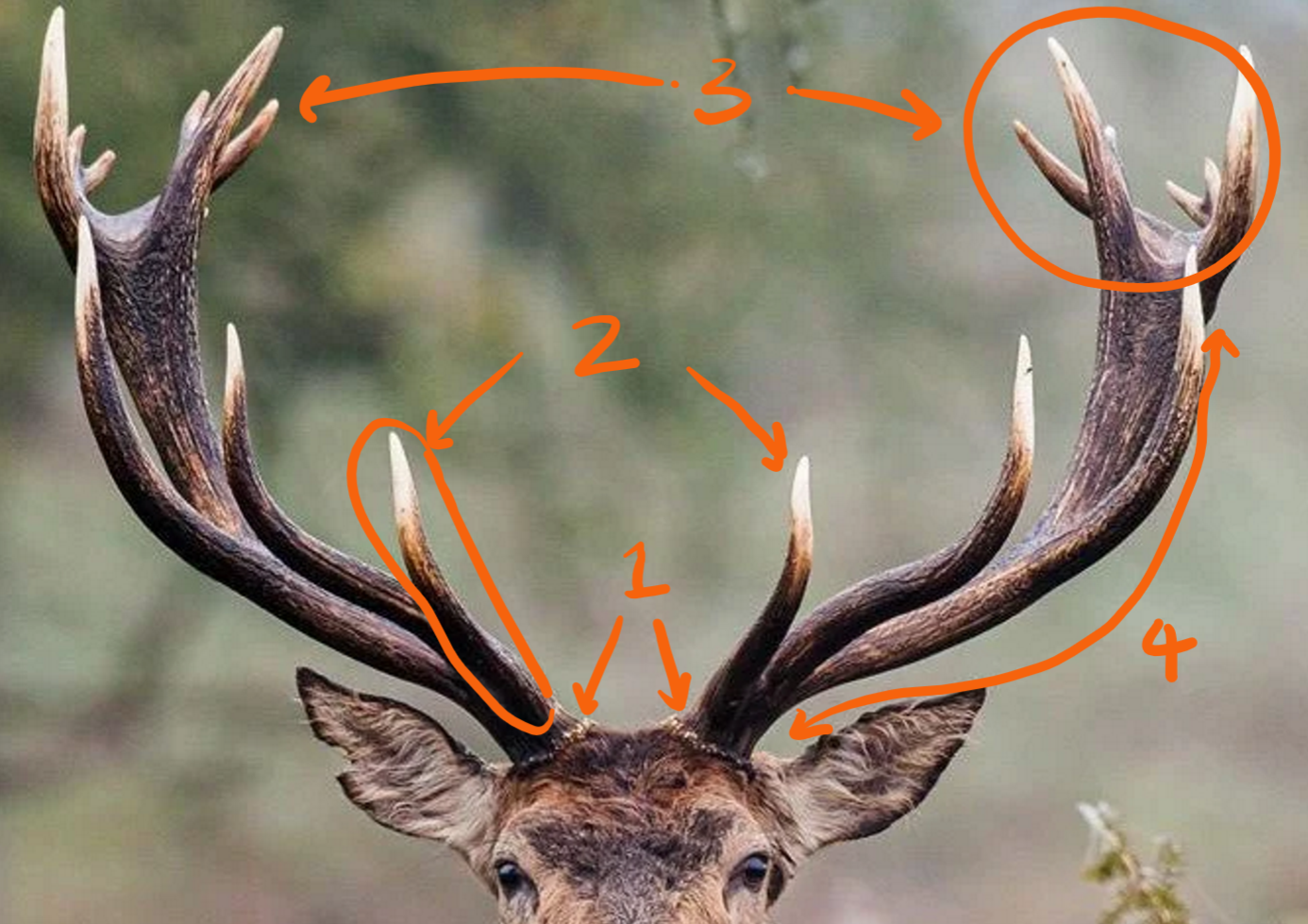
crown
#3
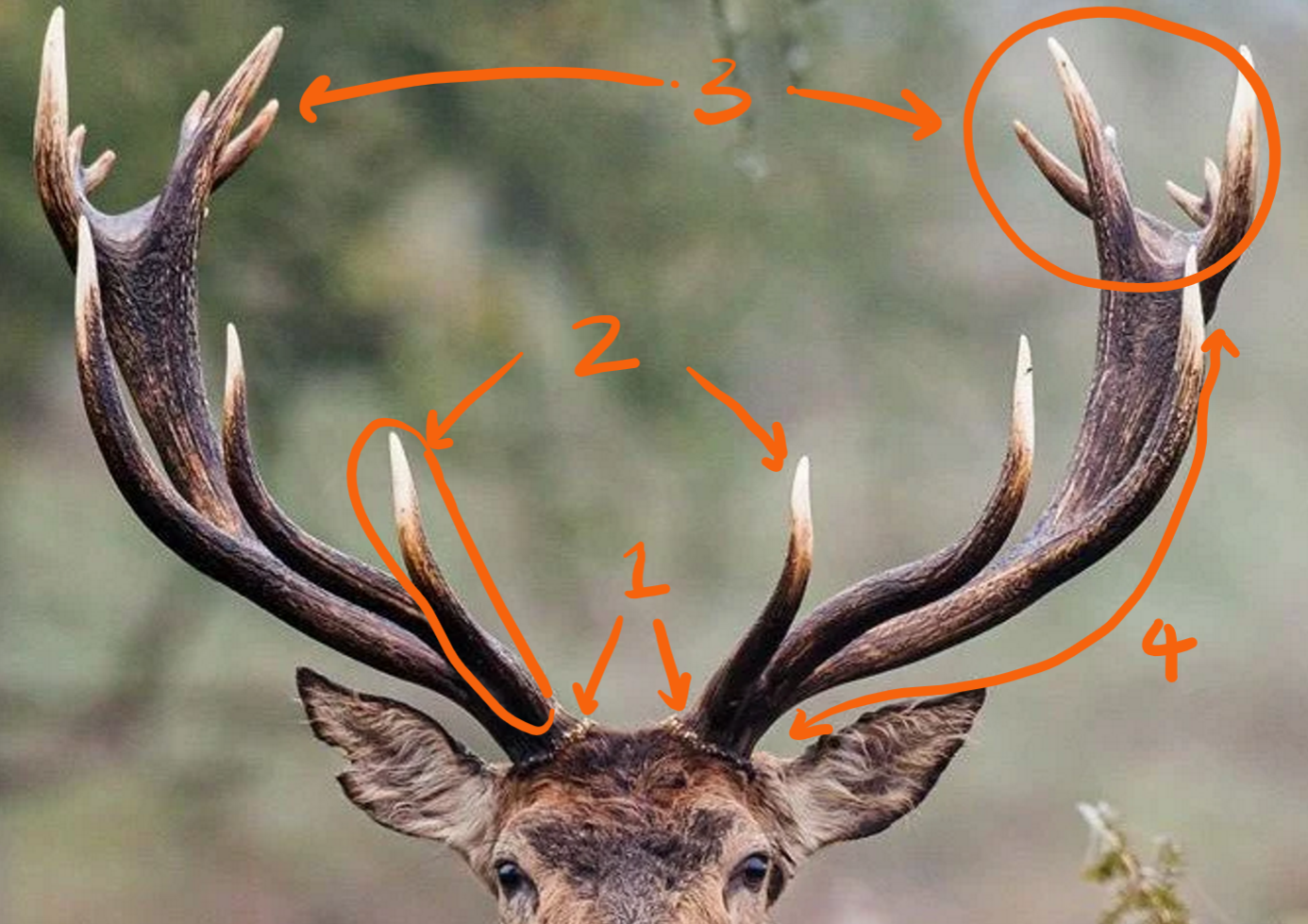
beam
#4
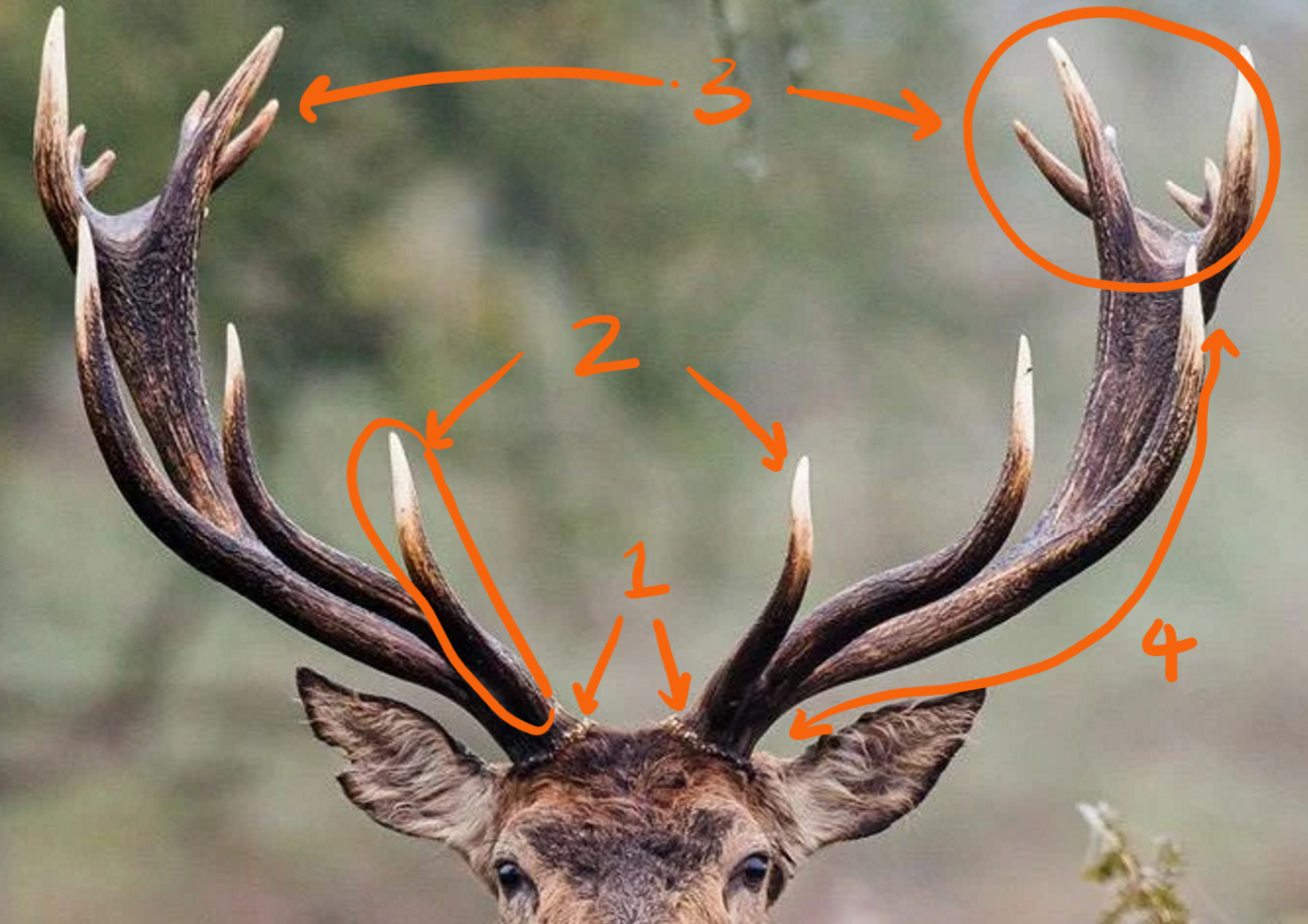
ossicones
horn-like structures found on giraffes and okapi that are first formed within the skin, then secondarily fuses to skull